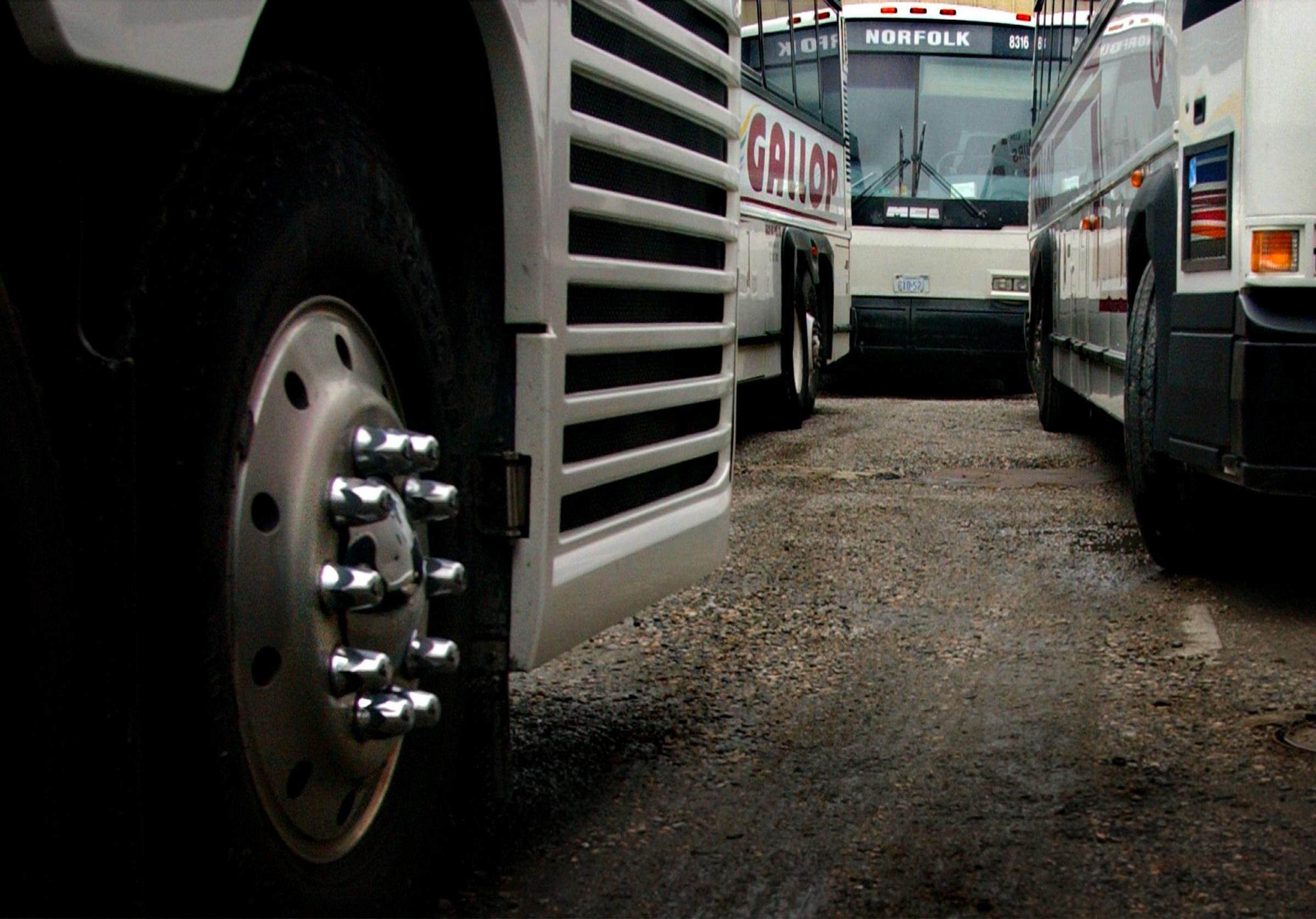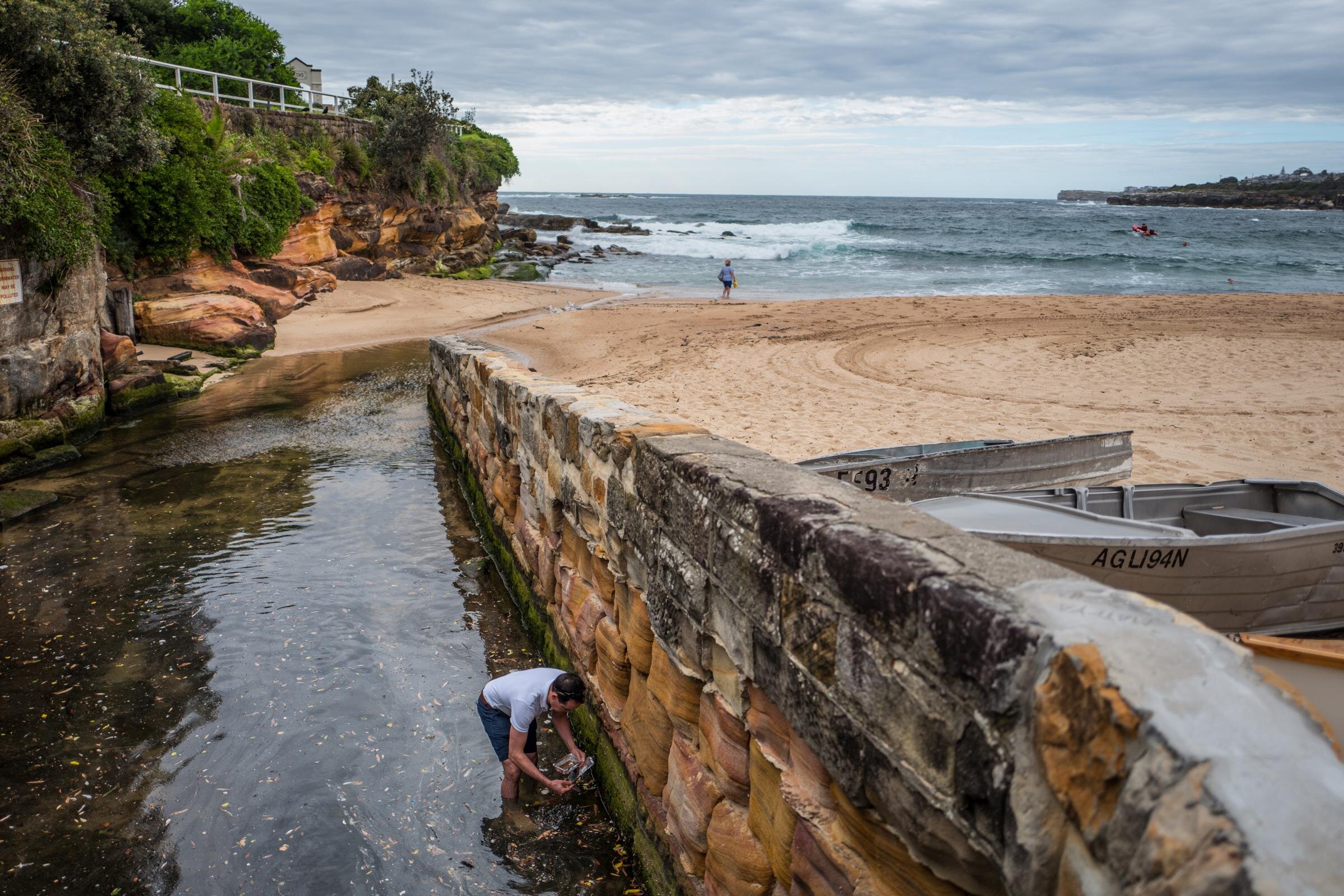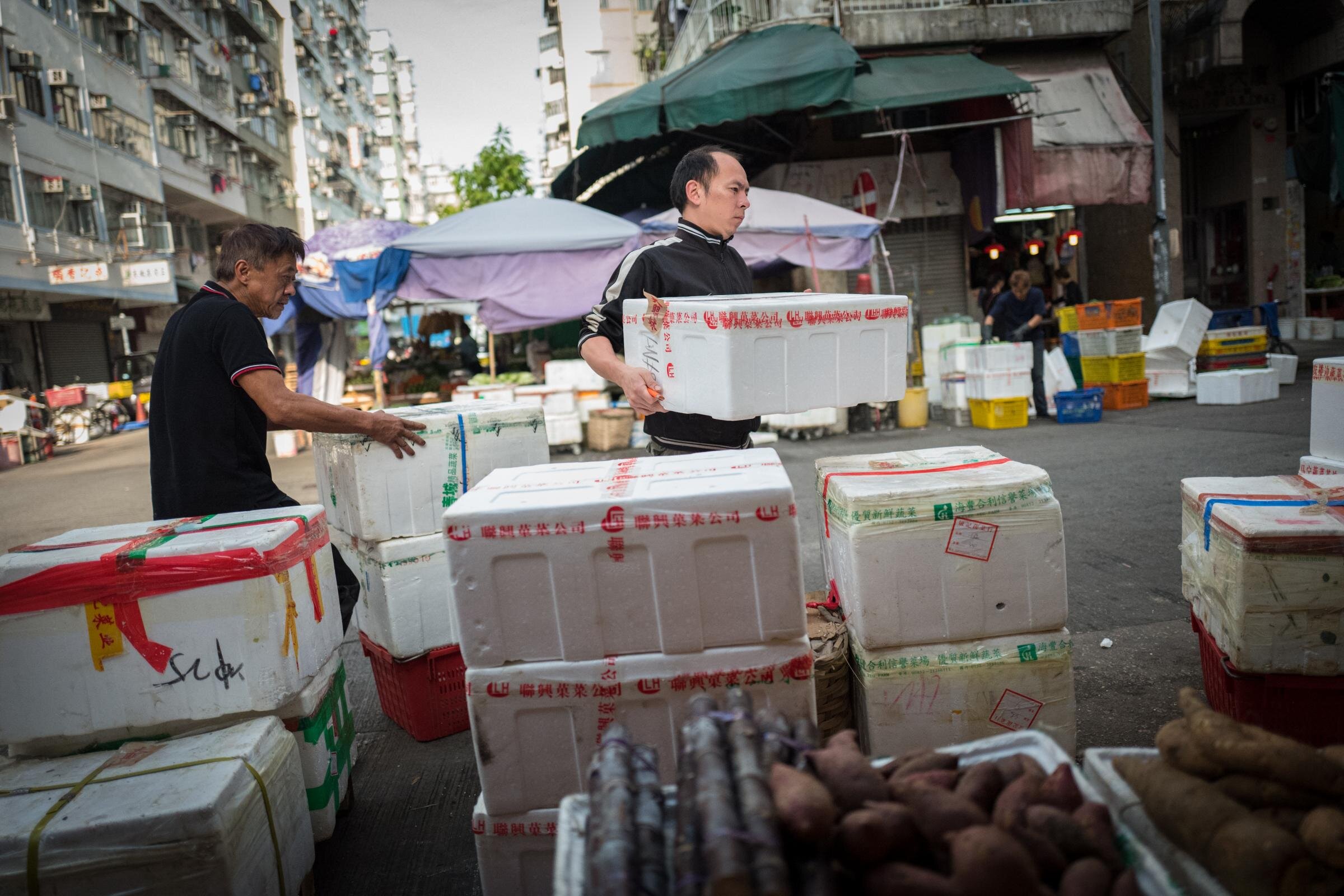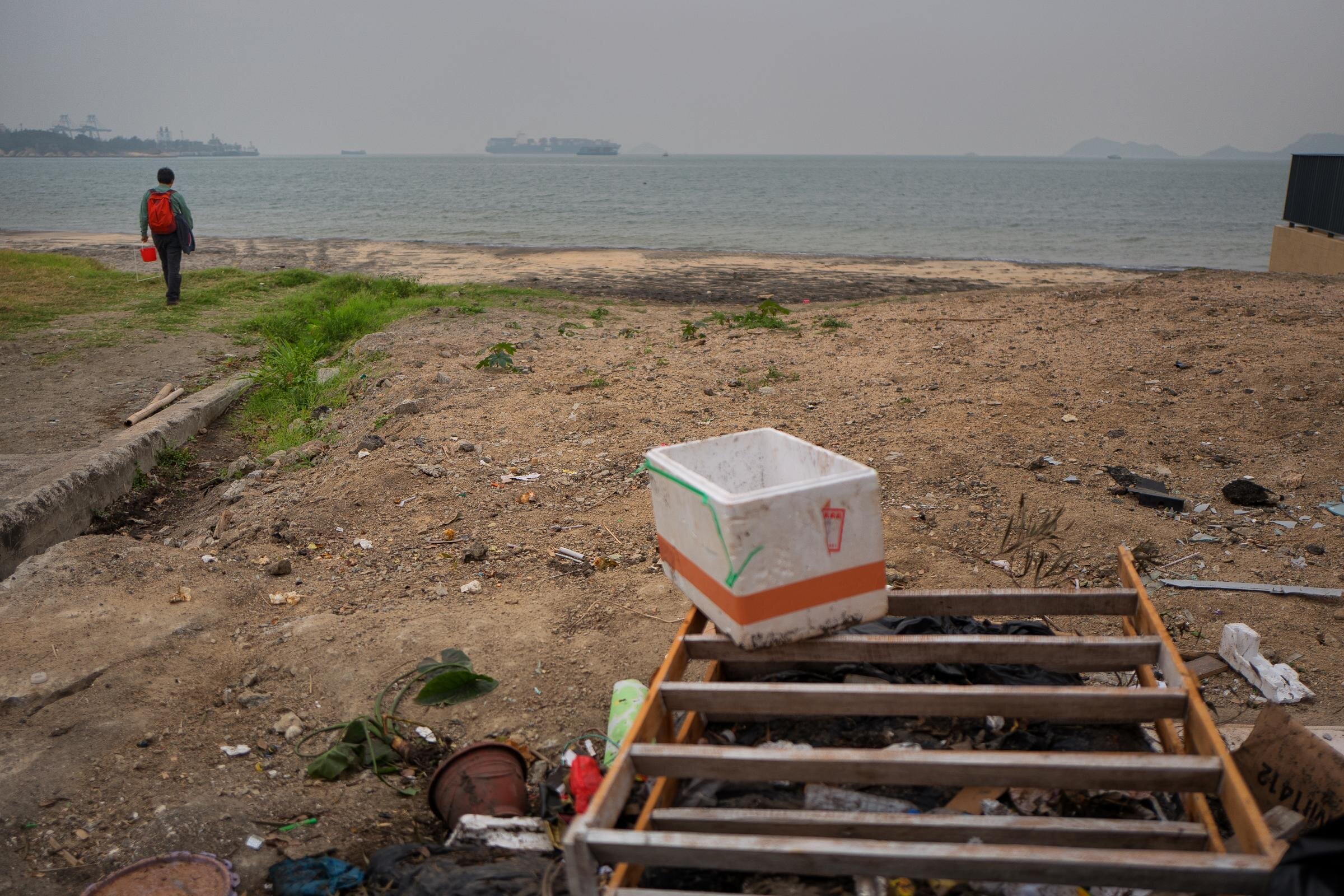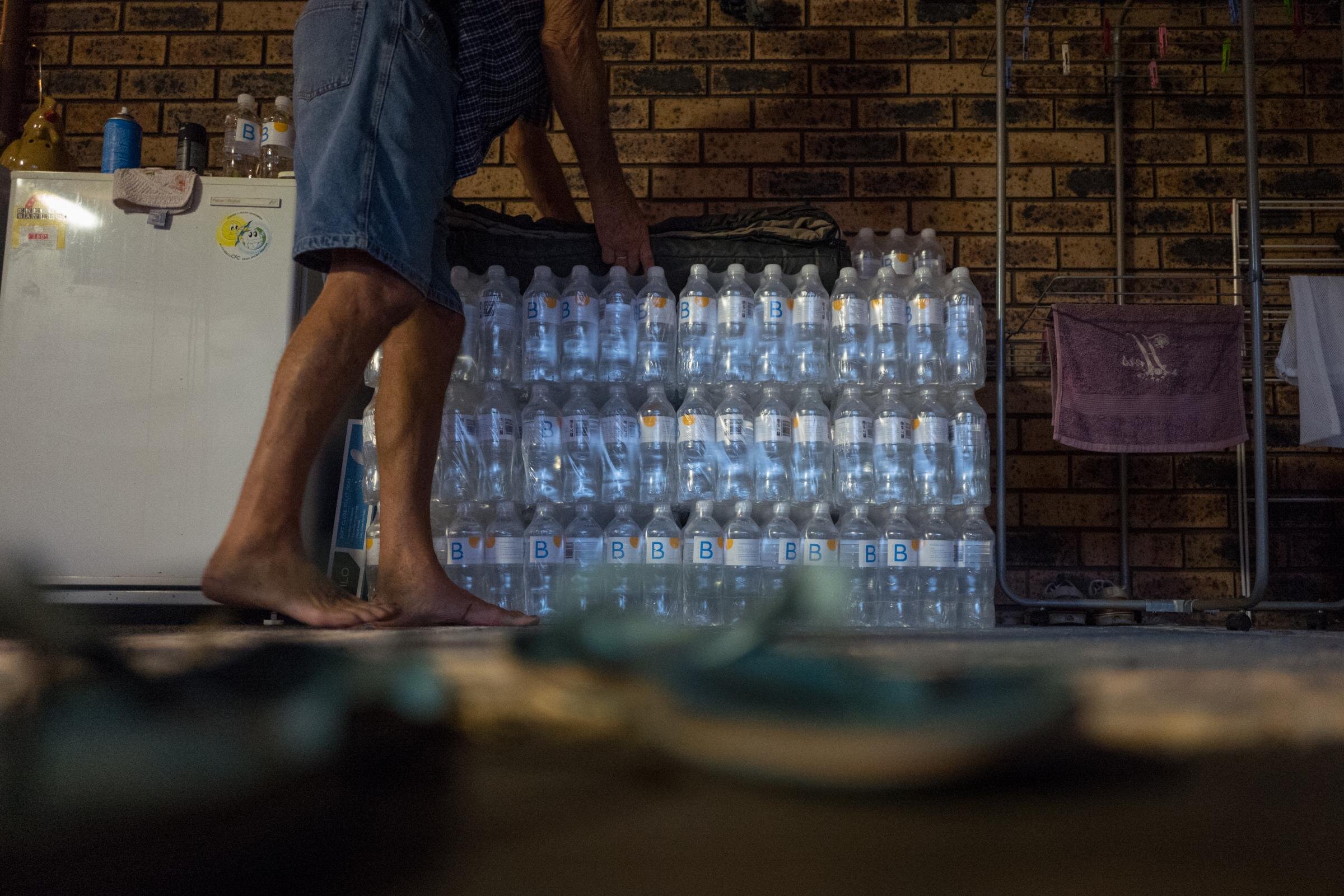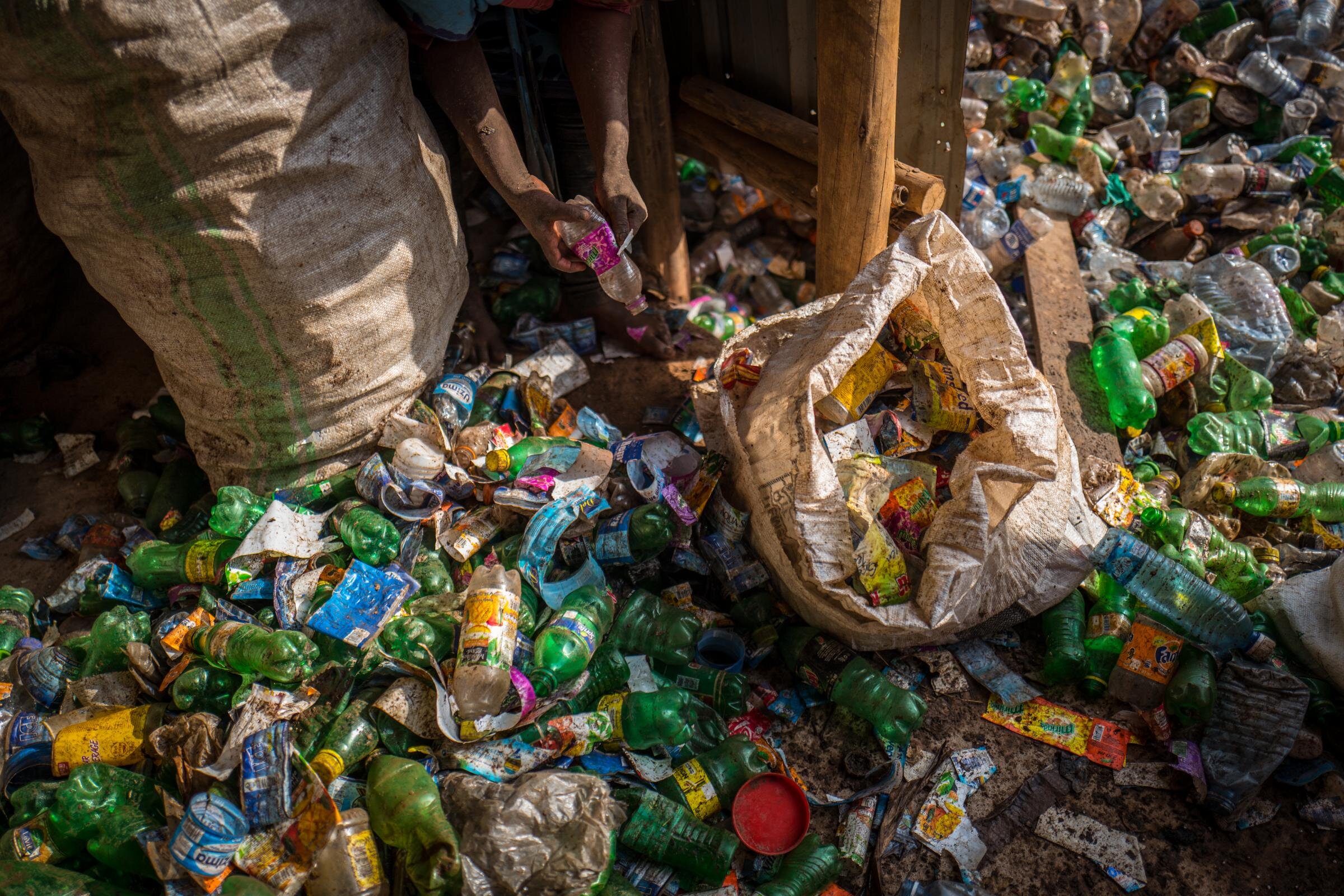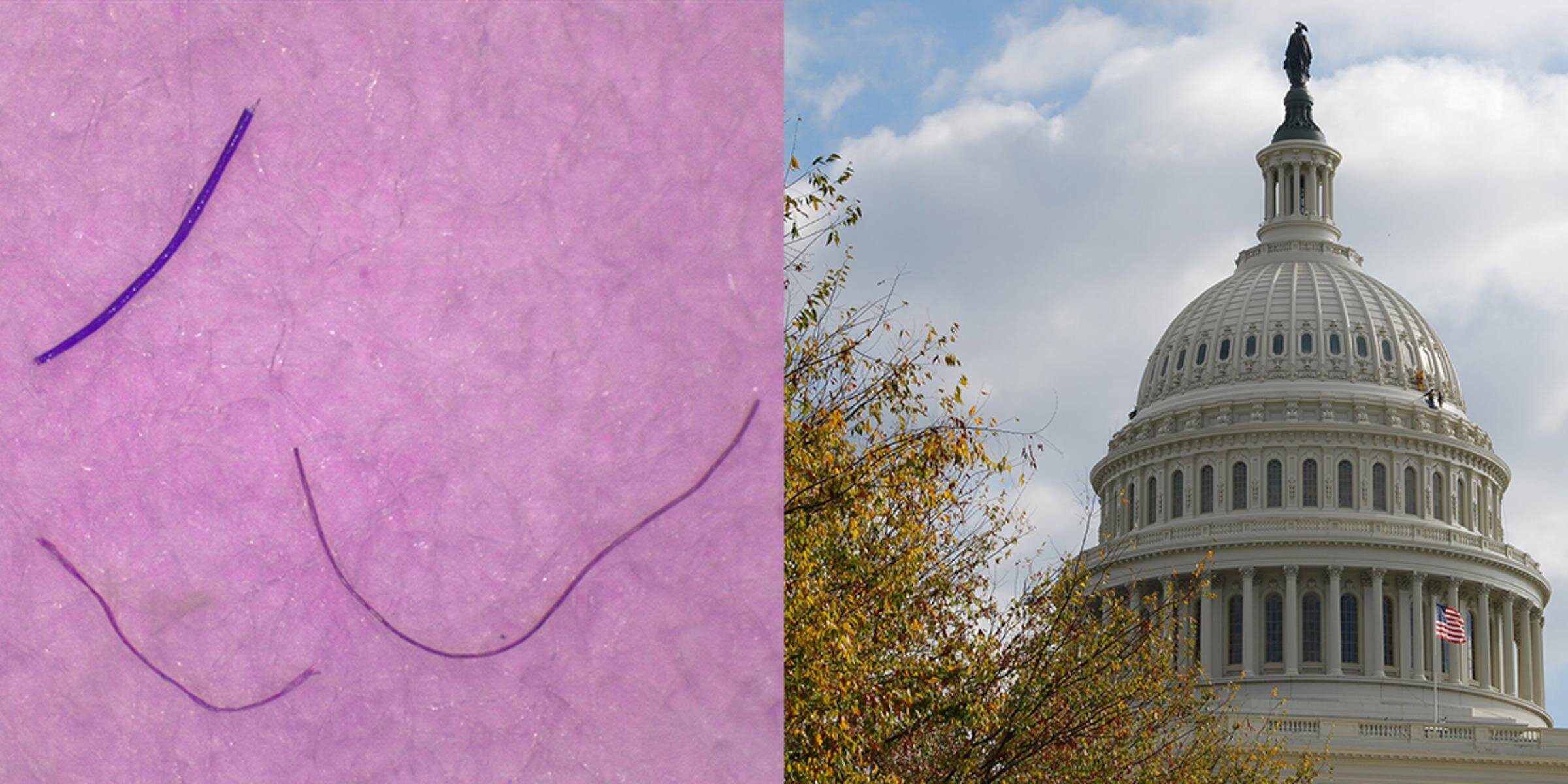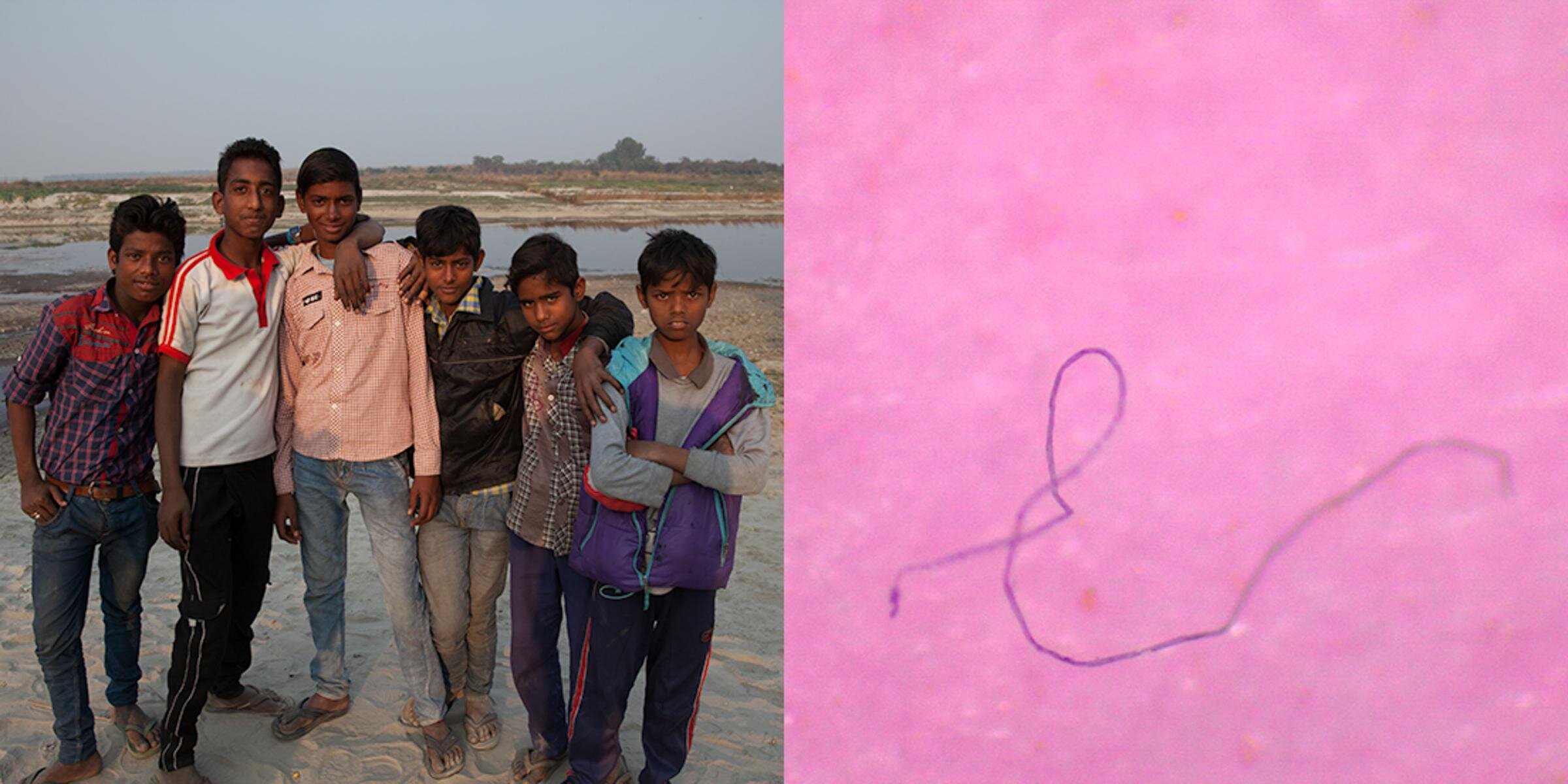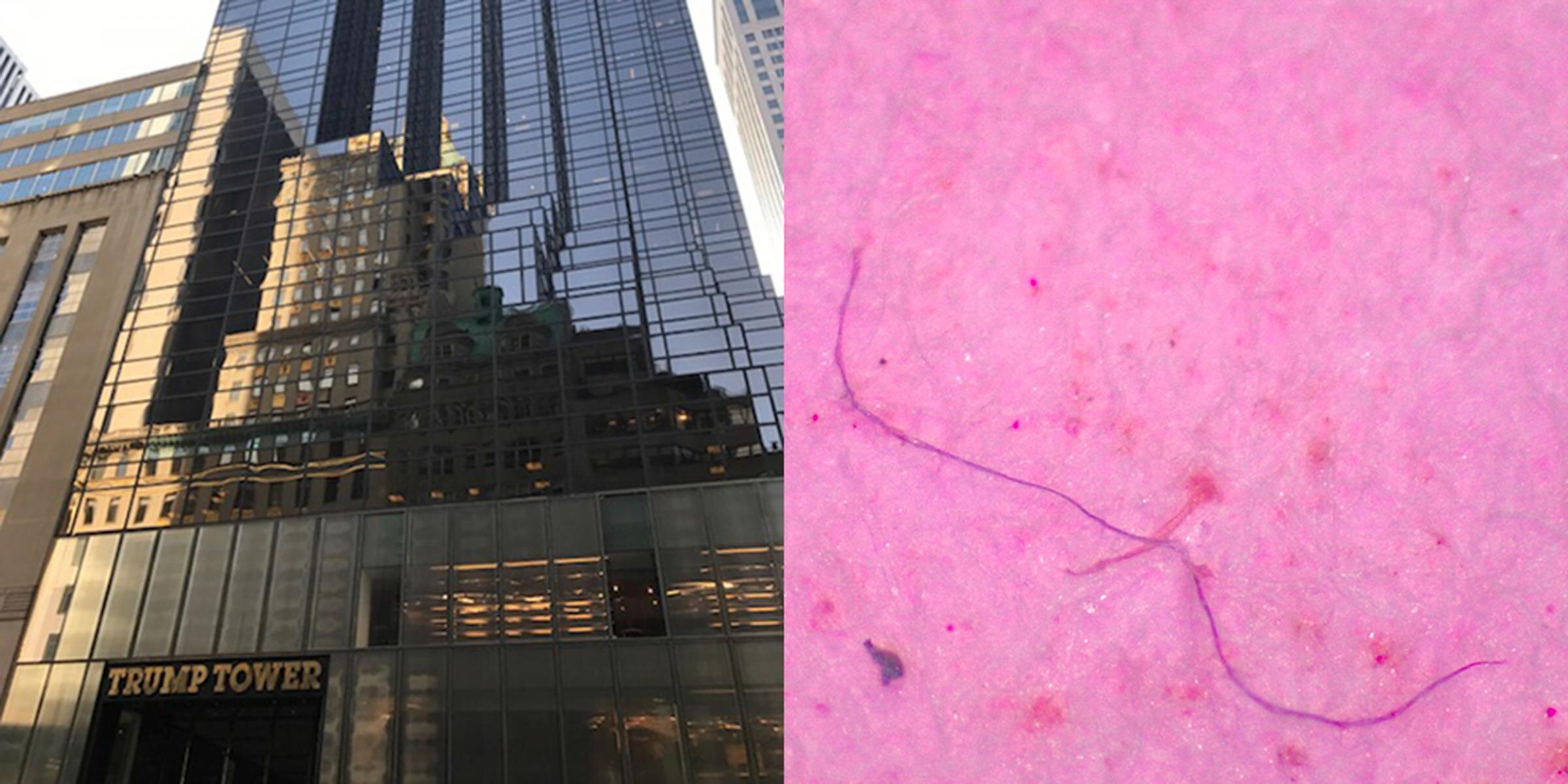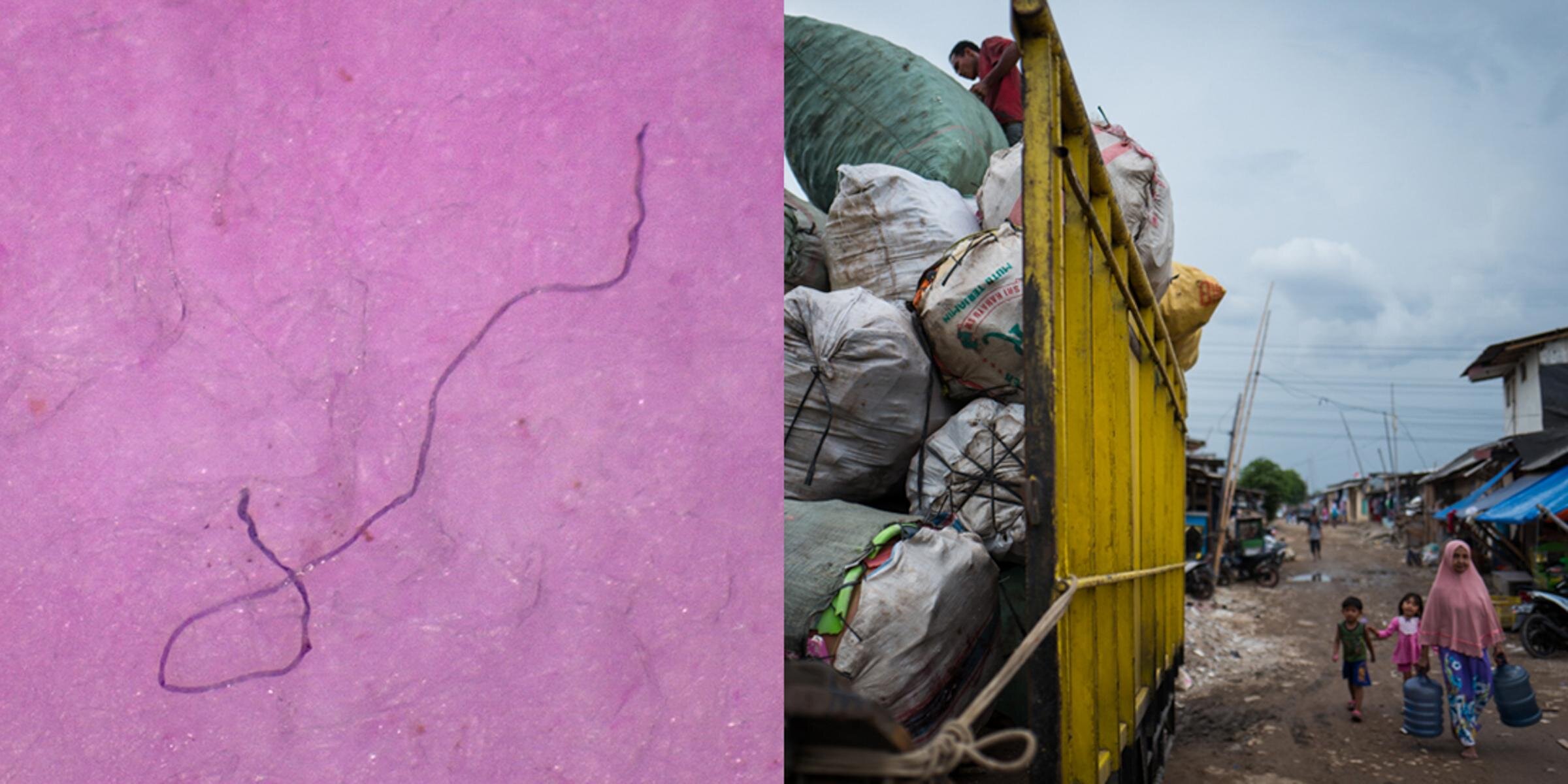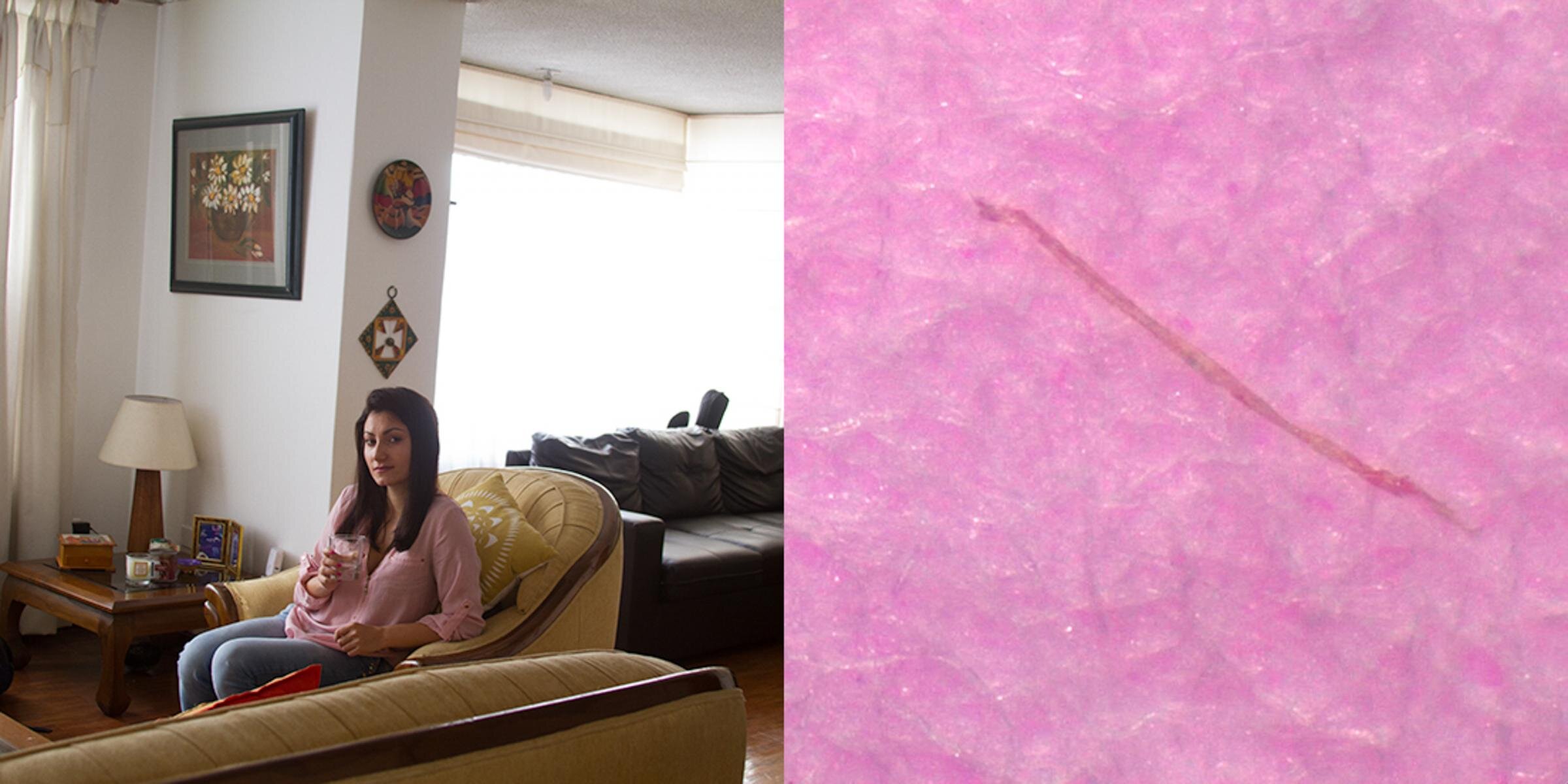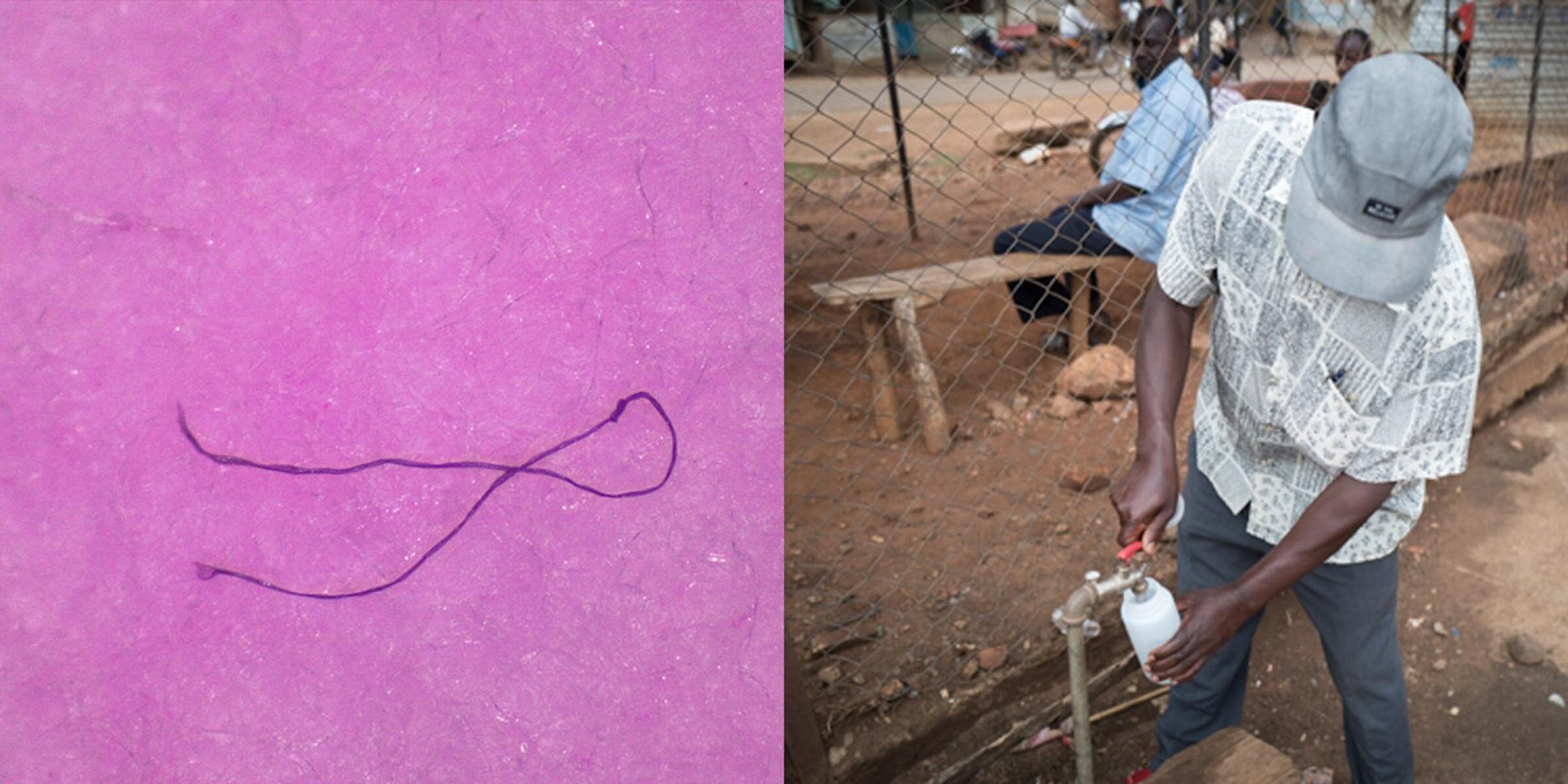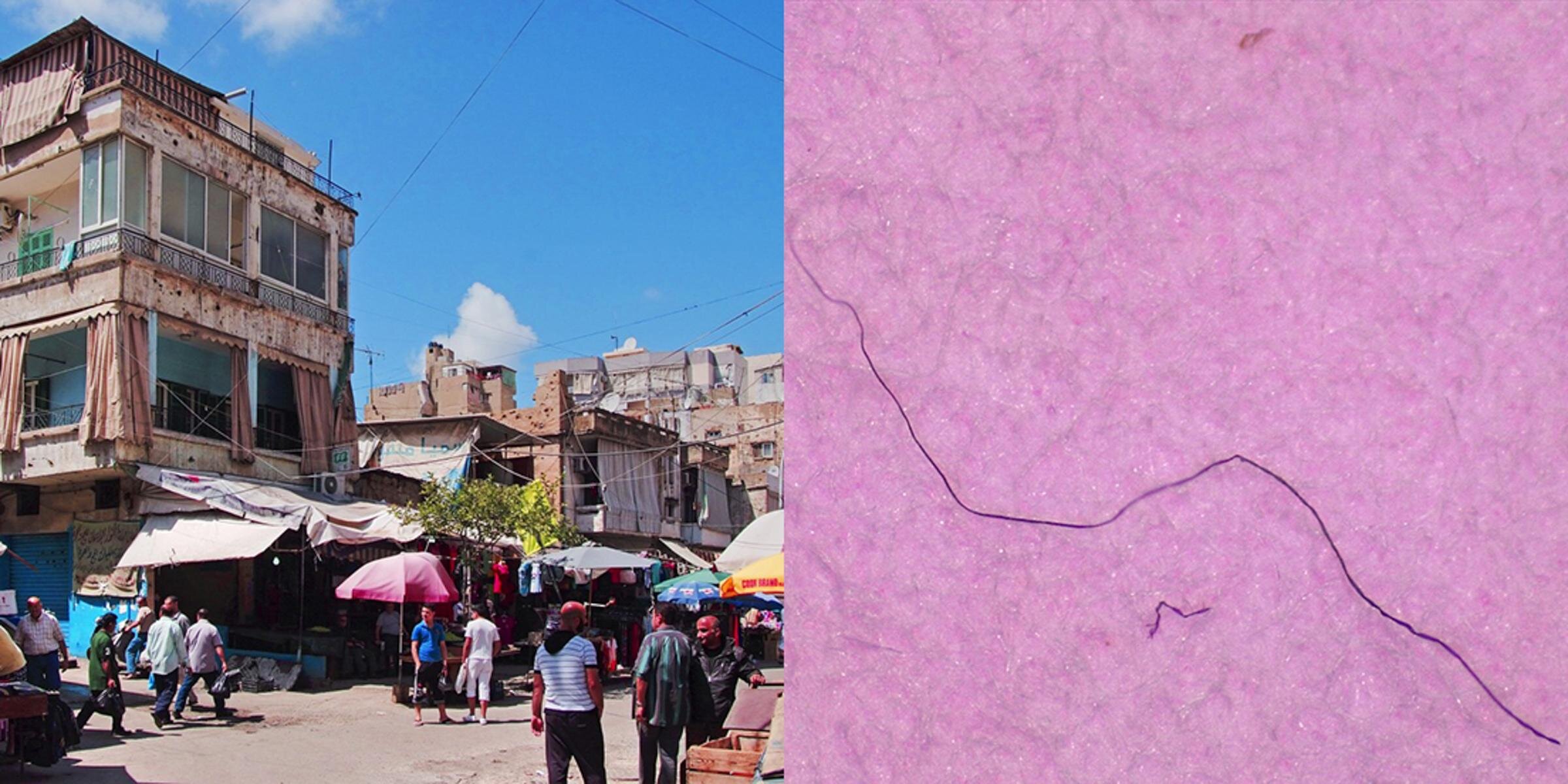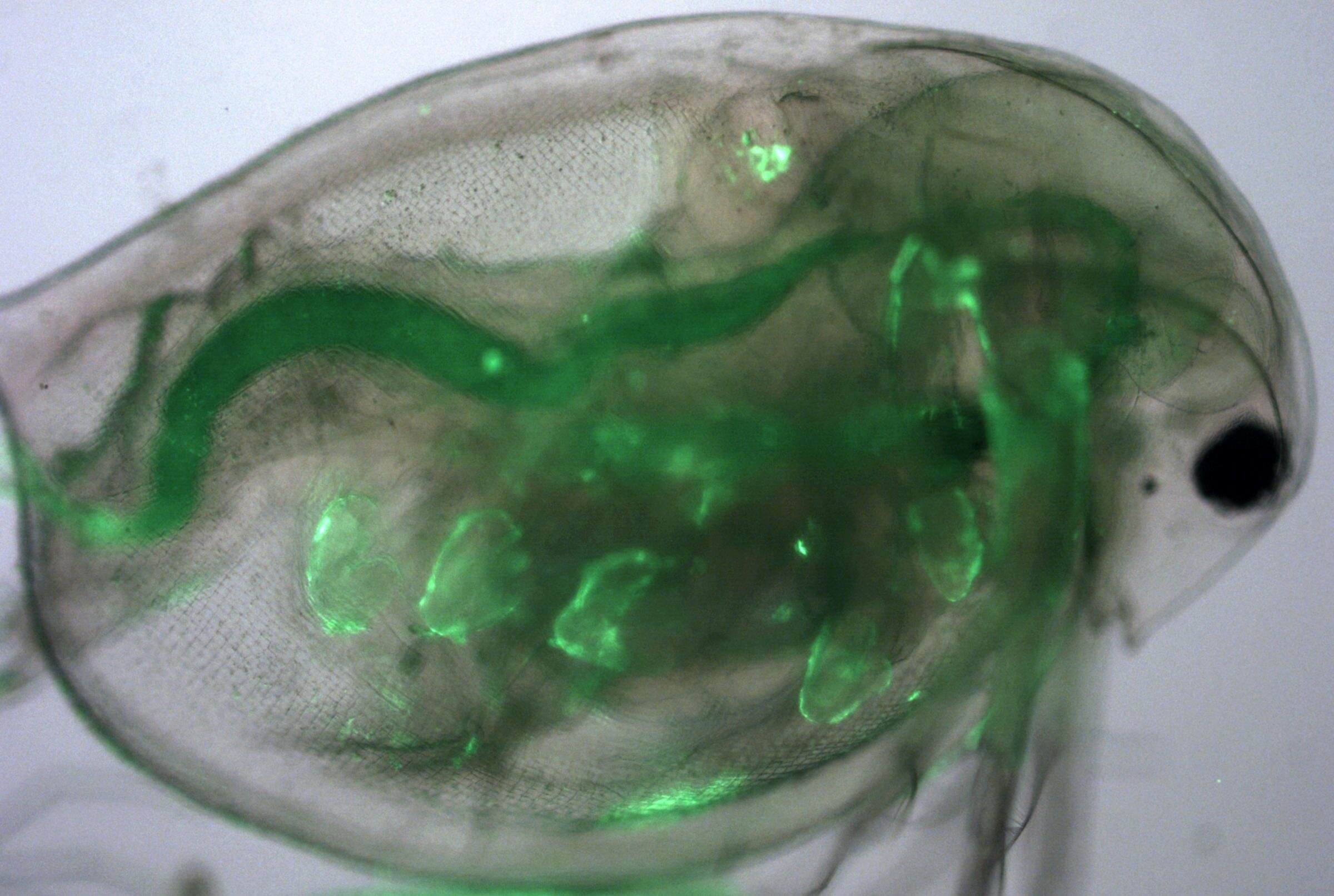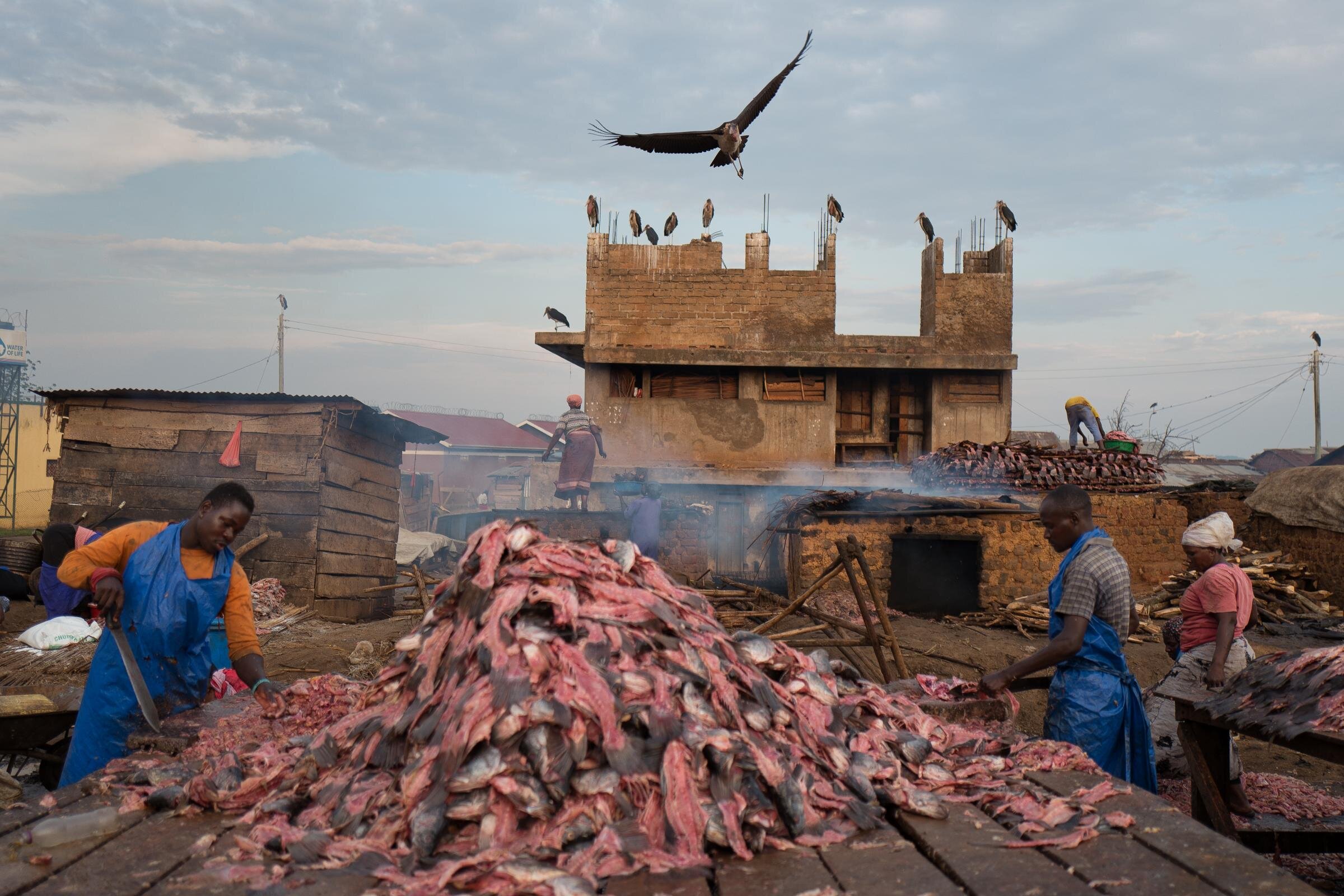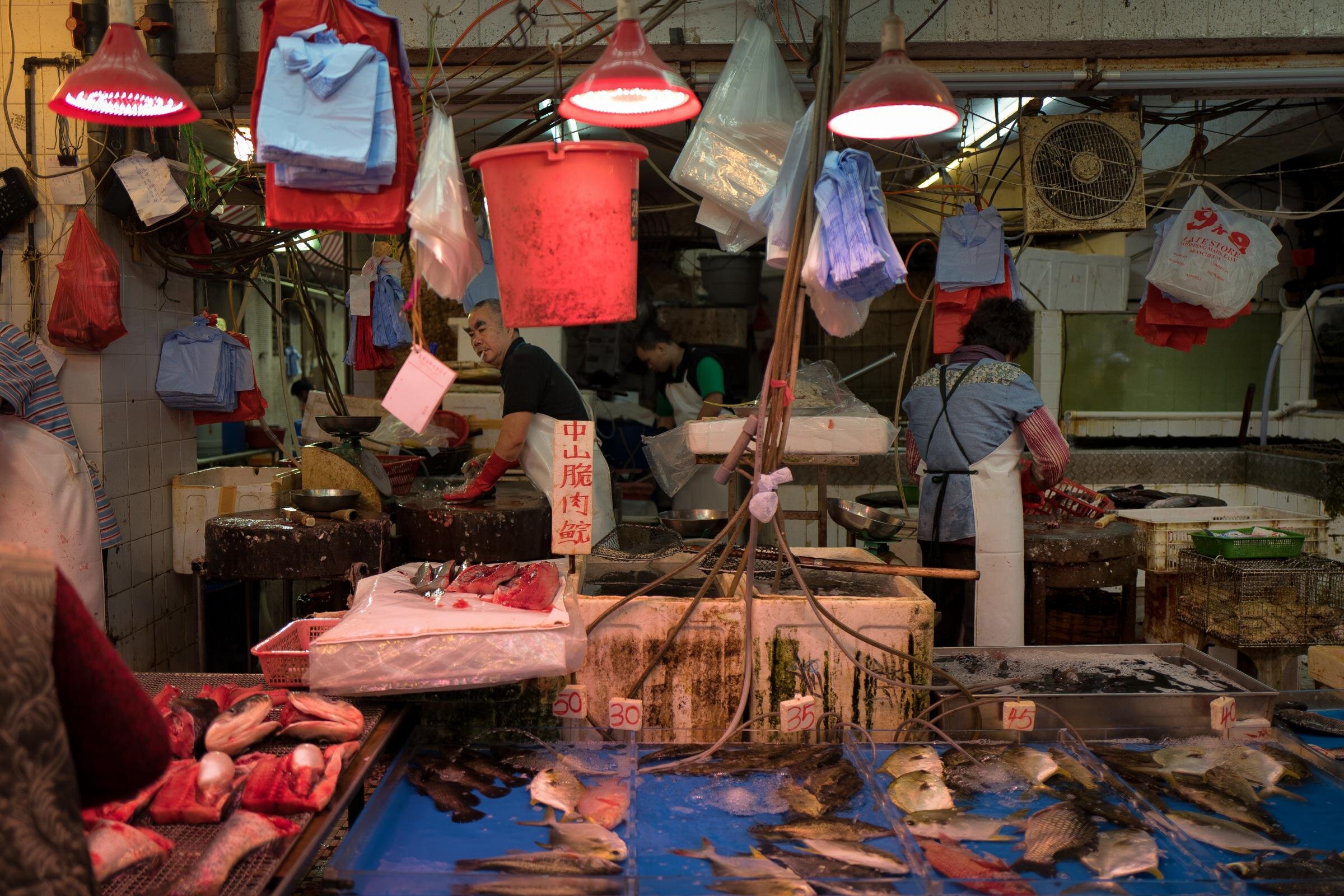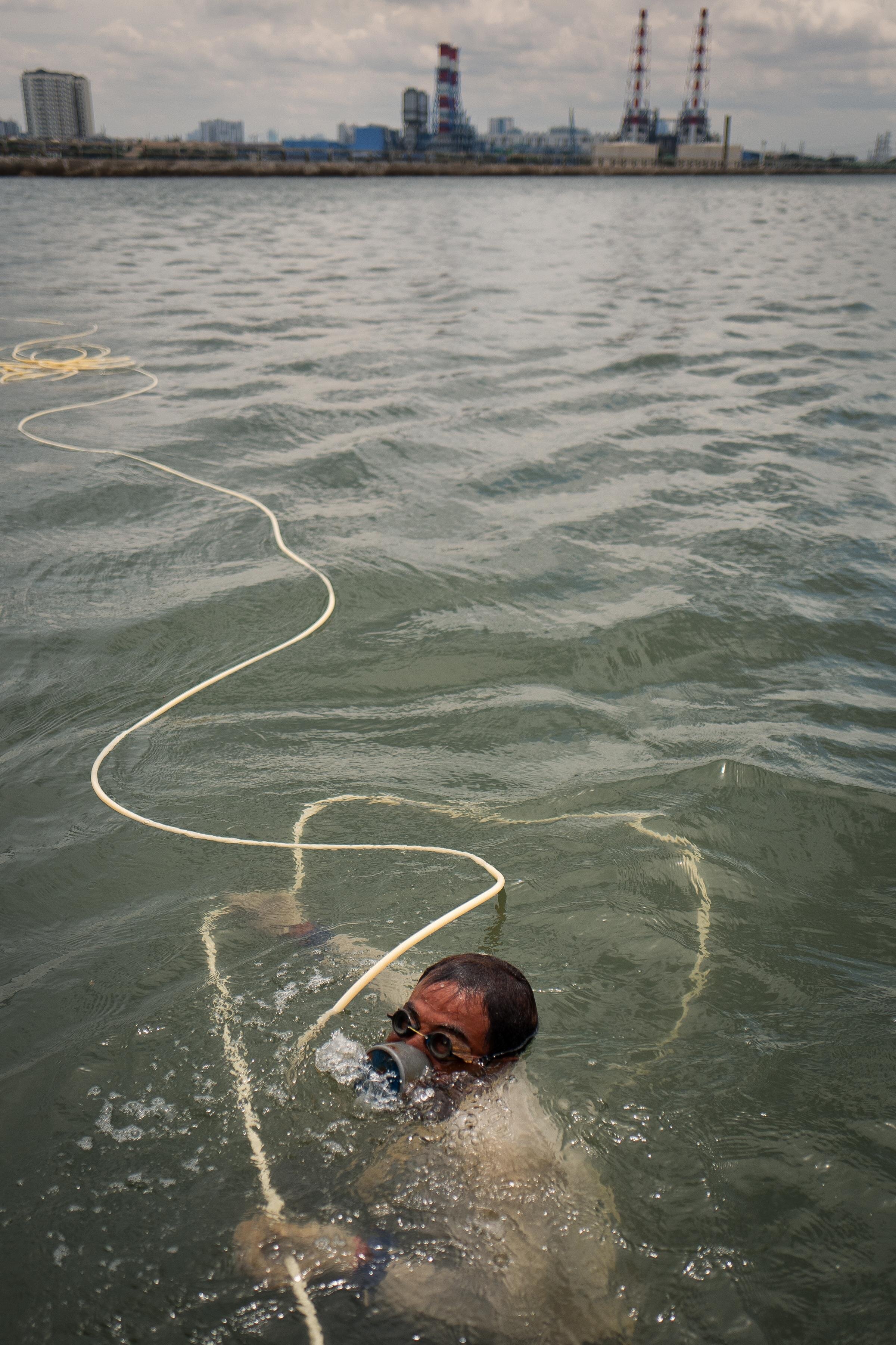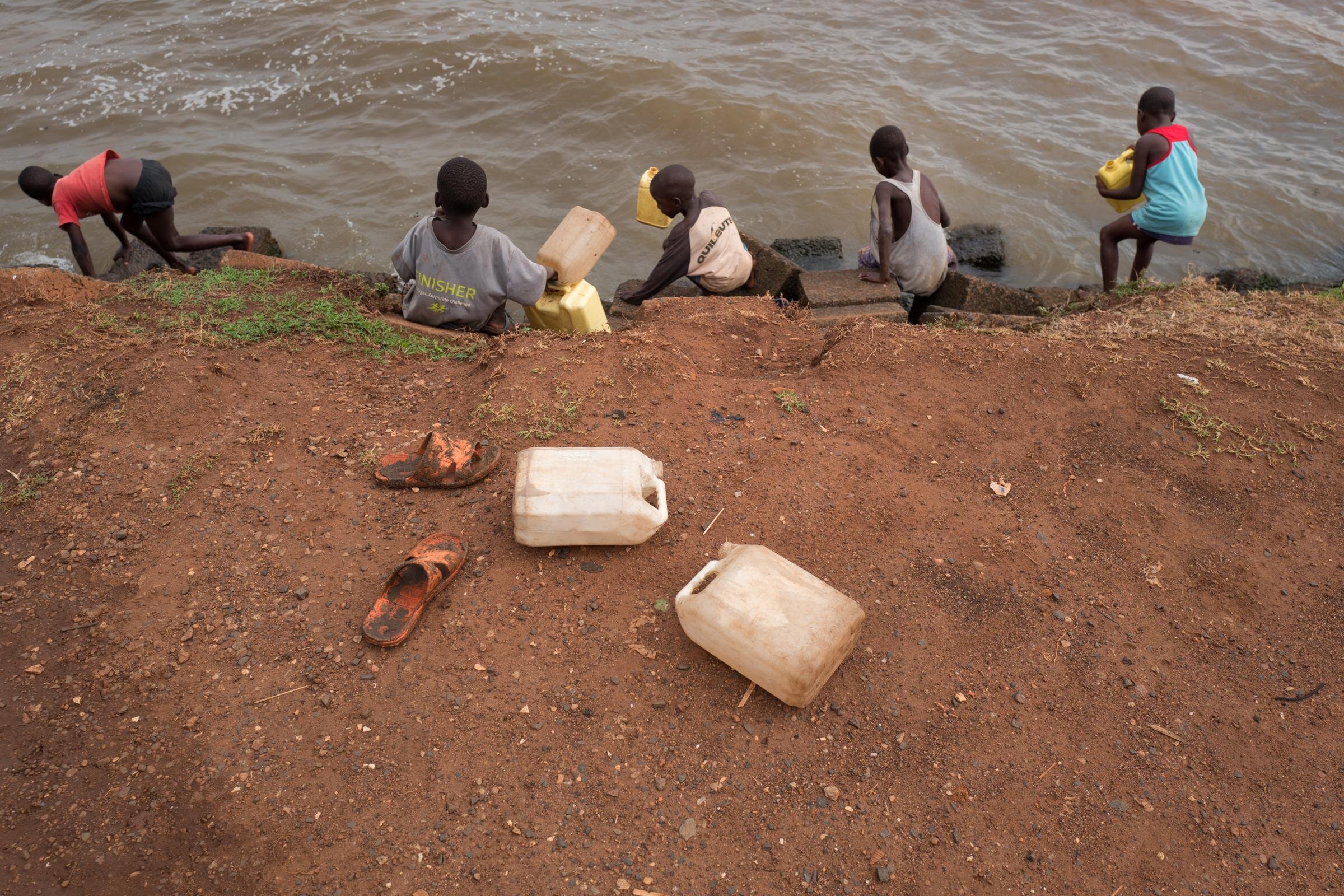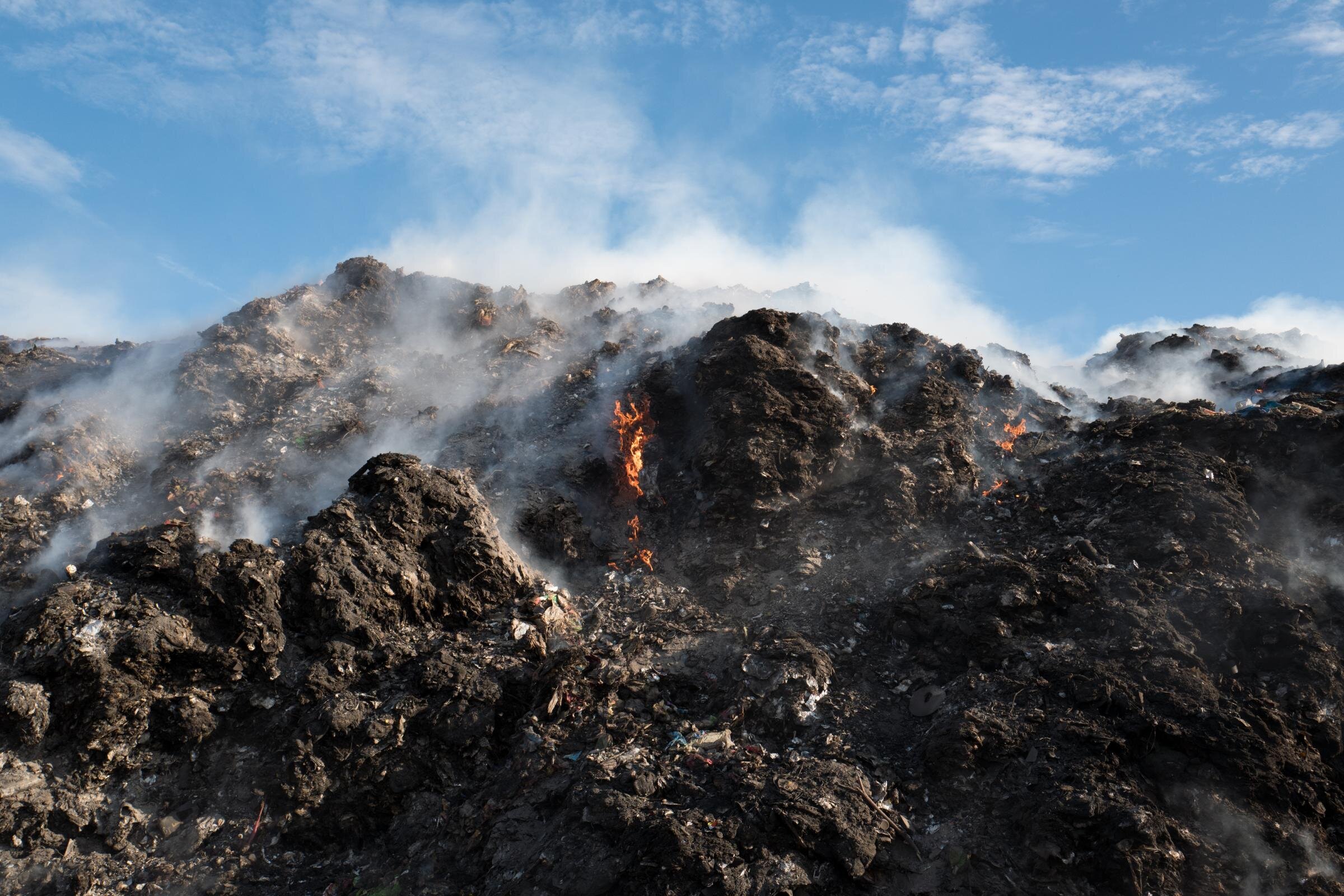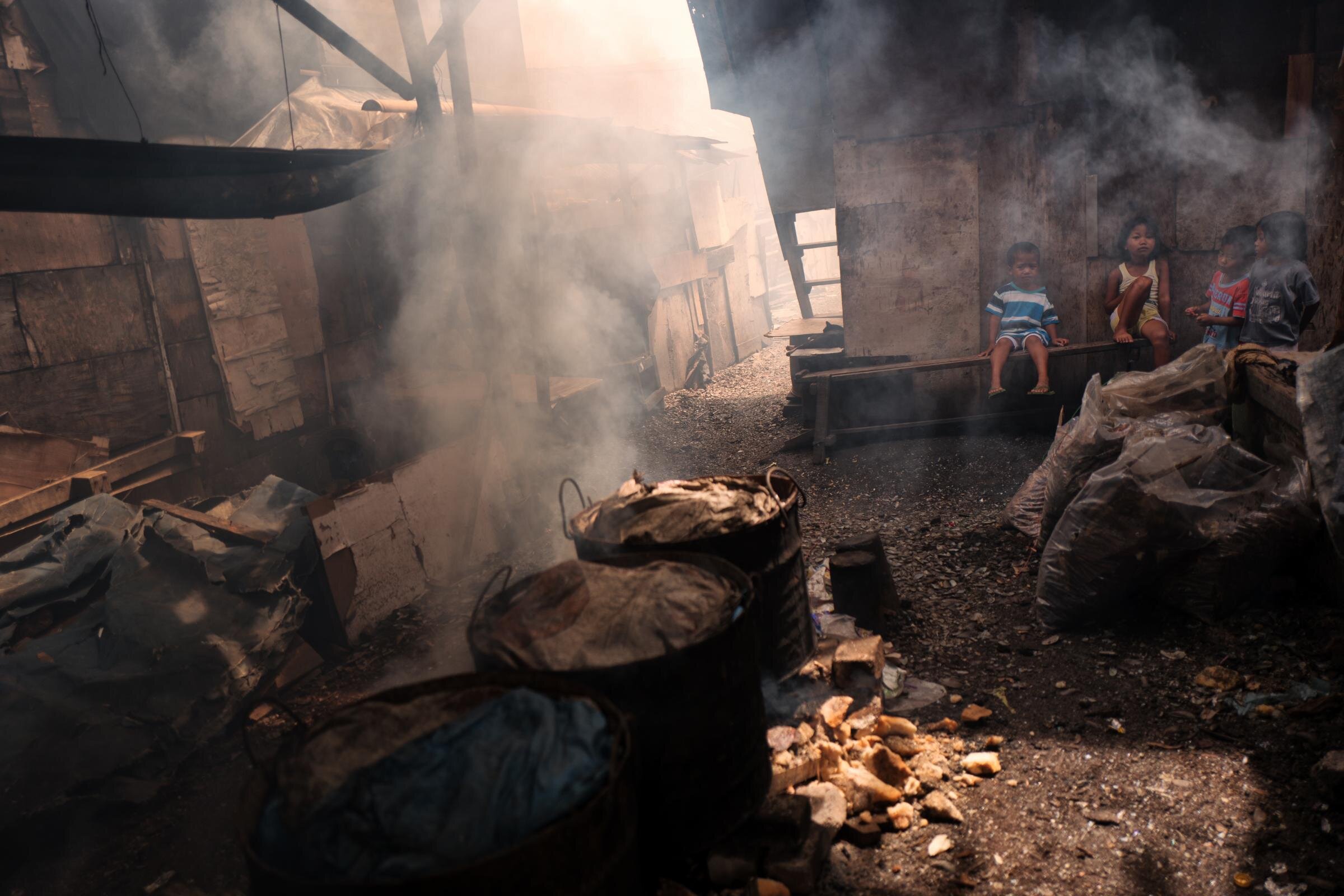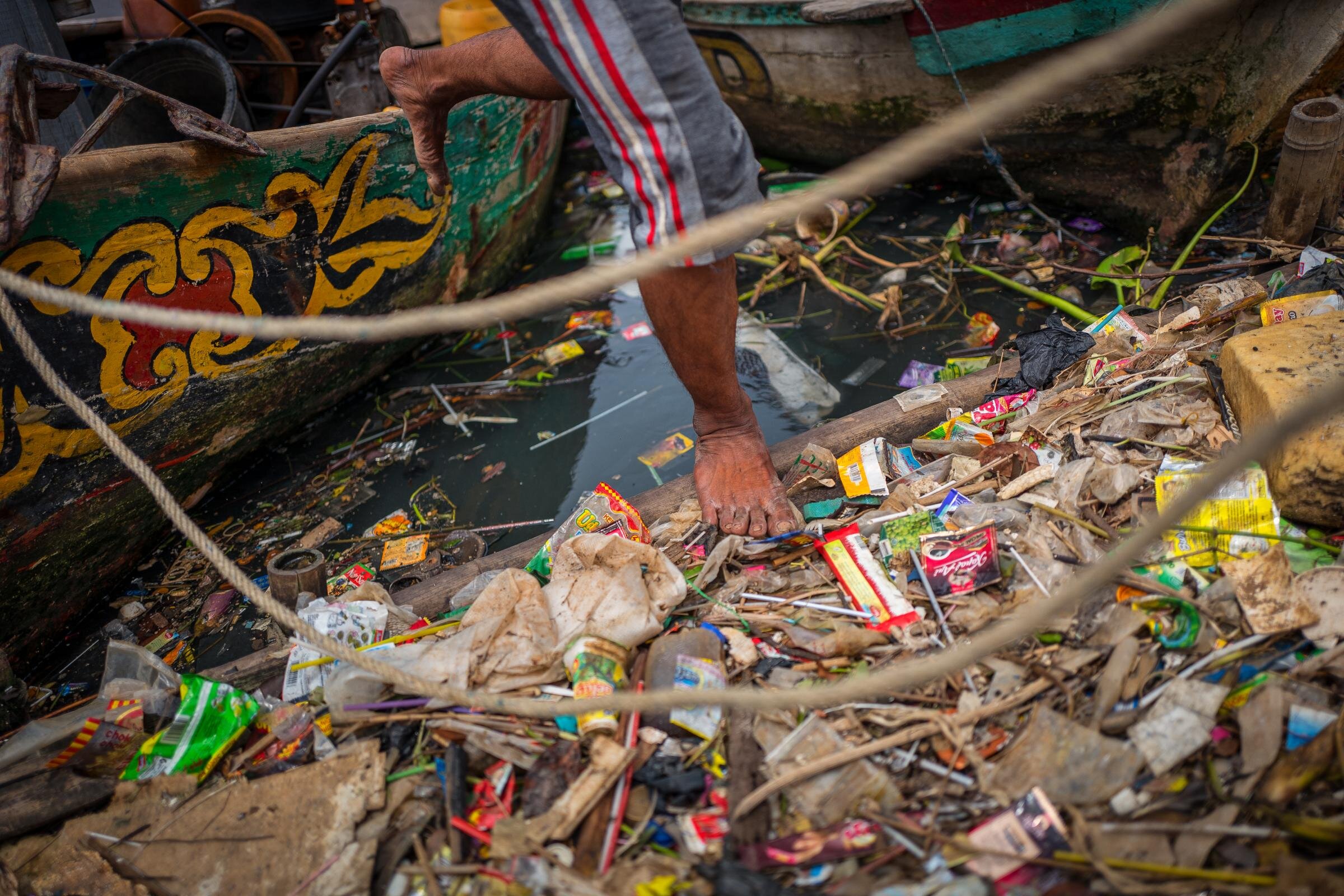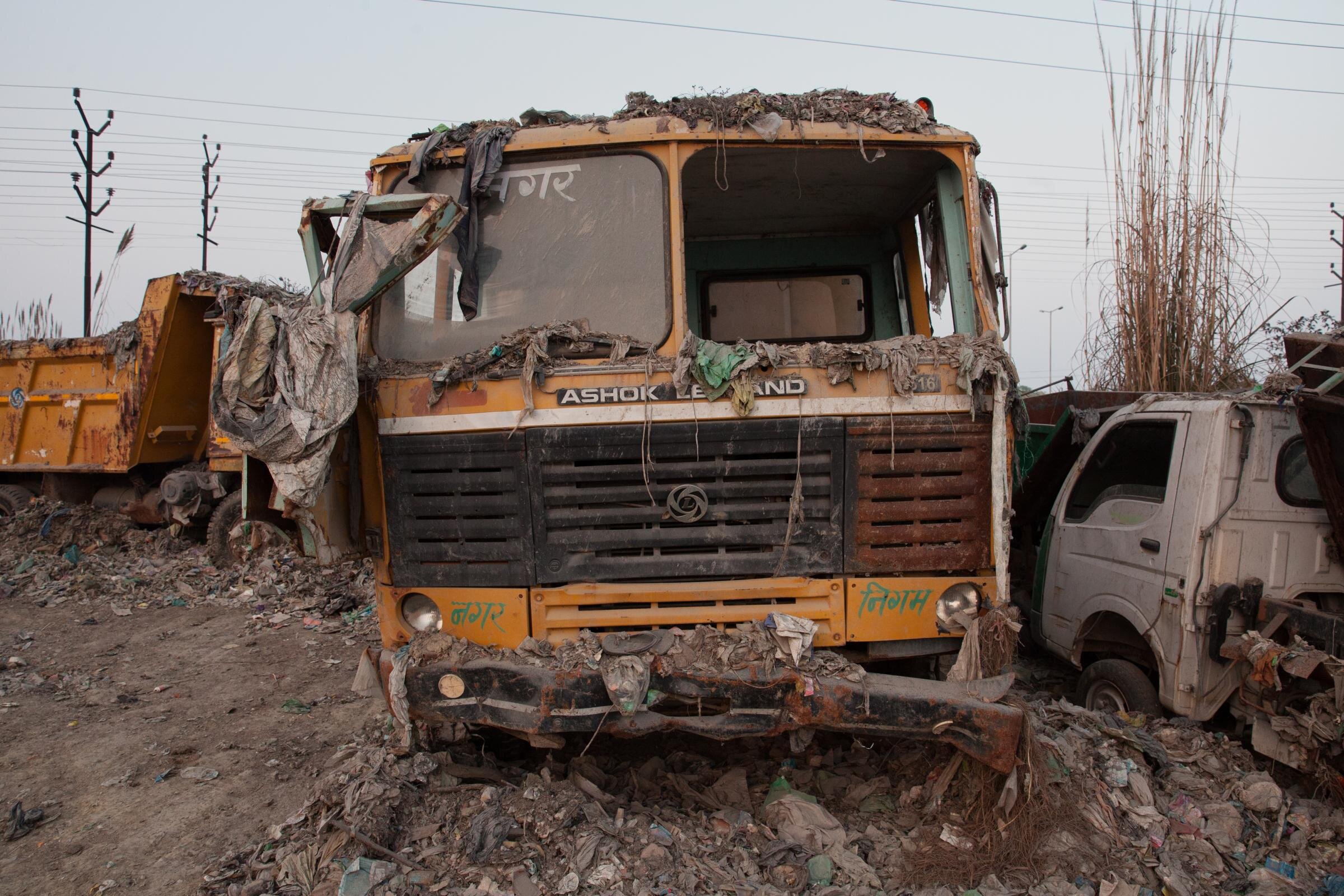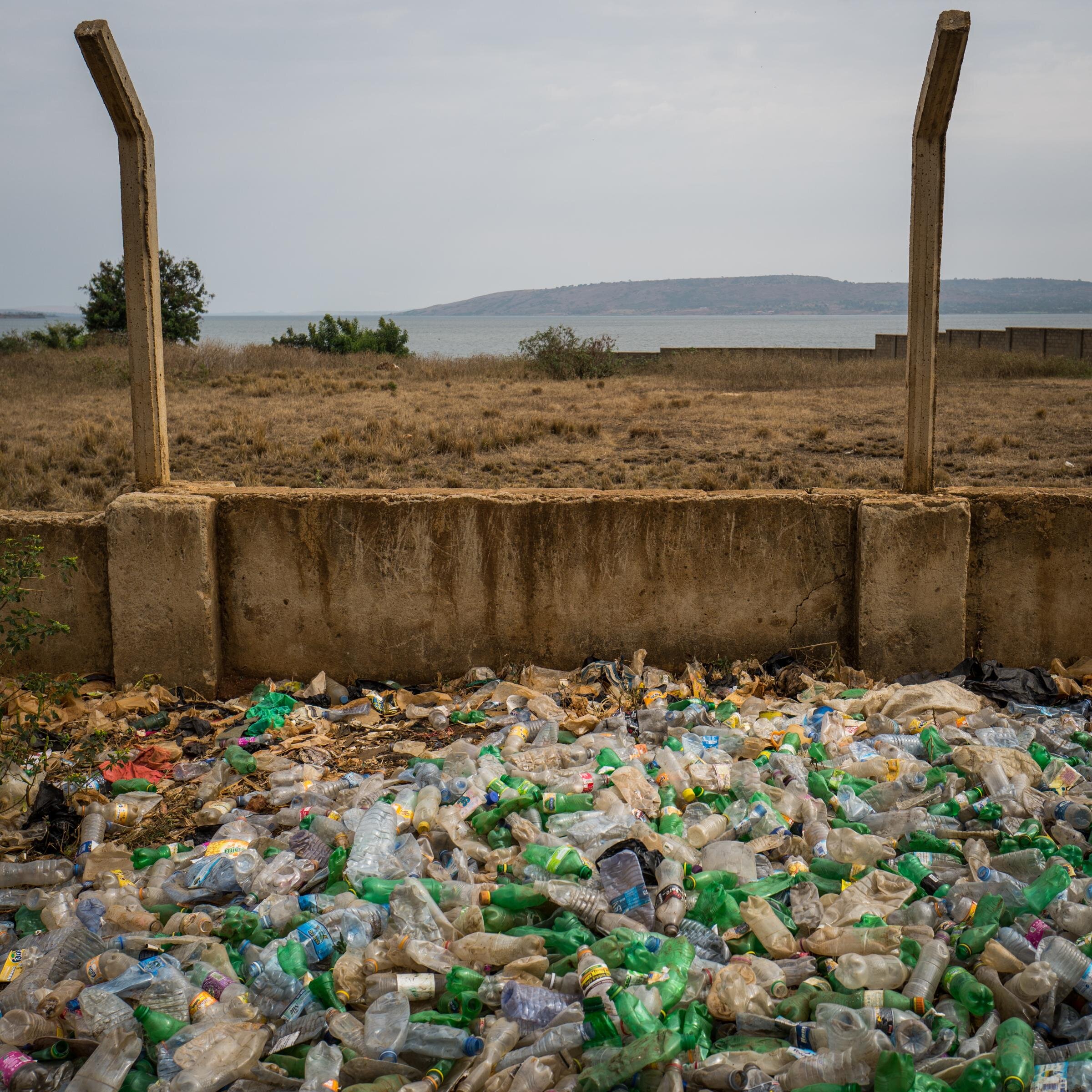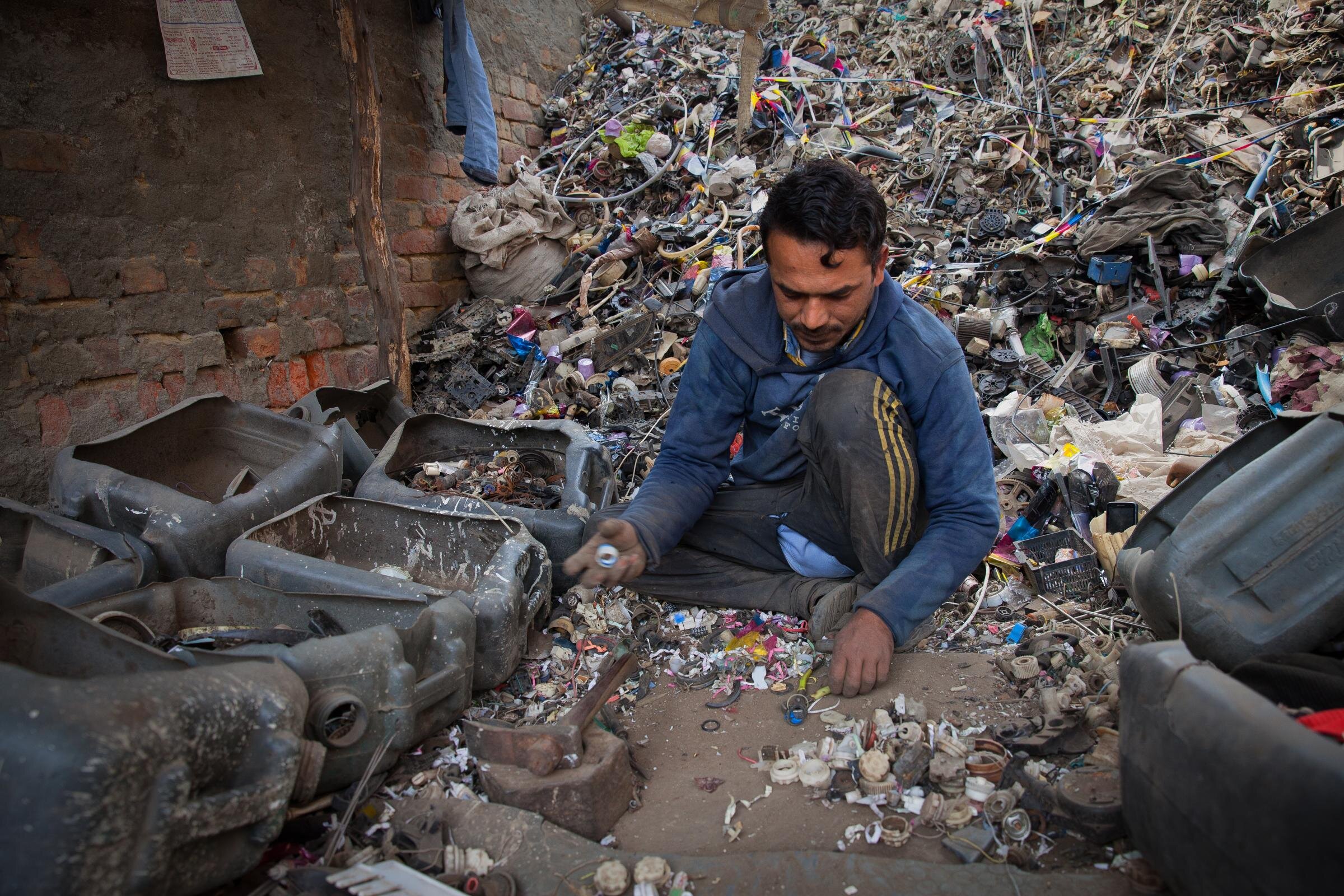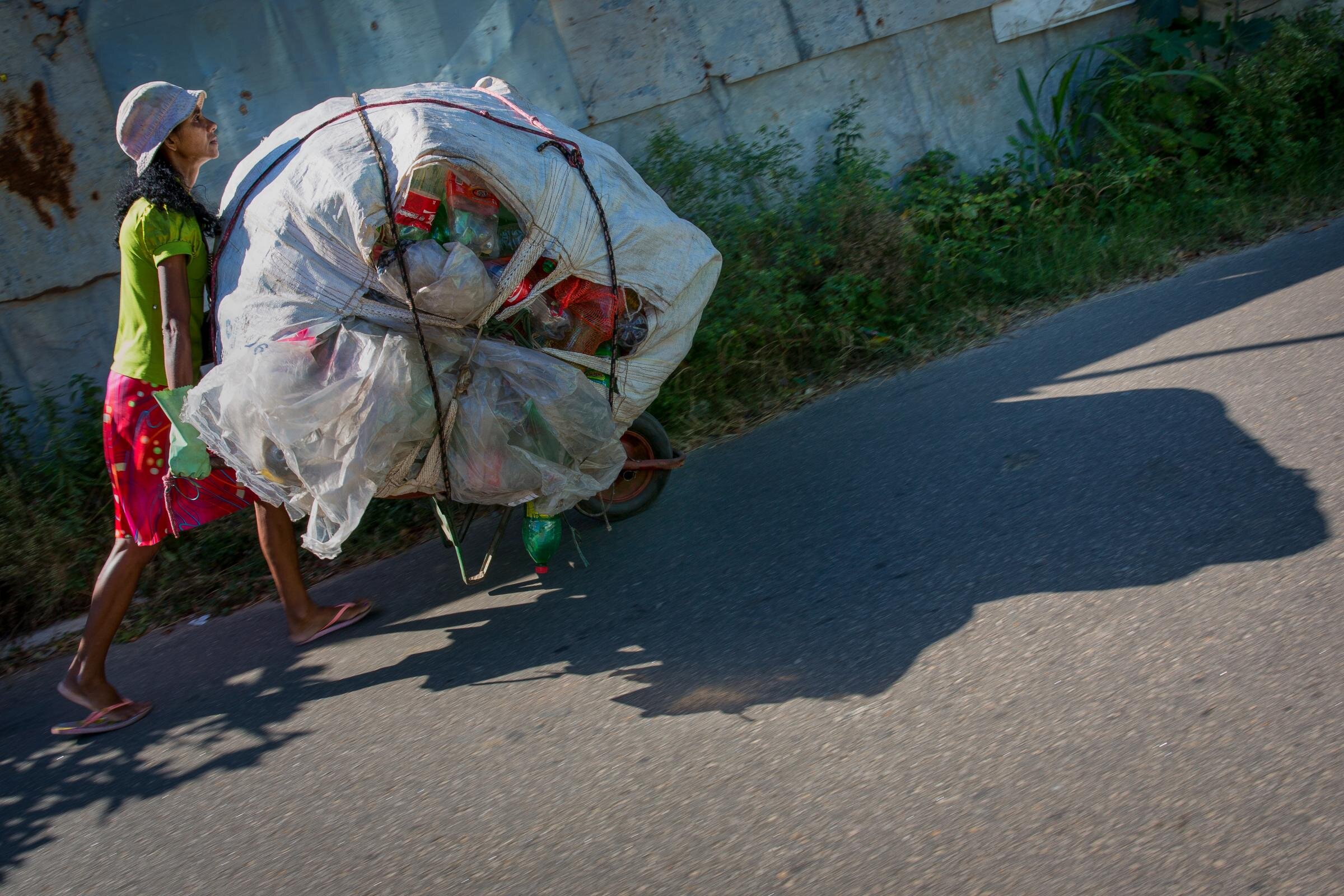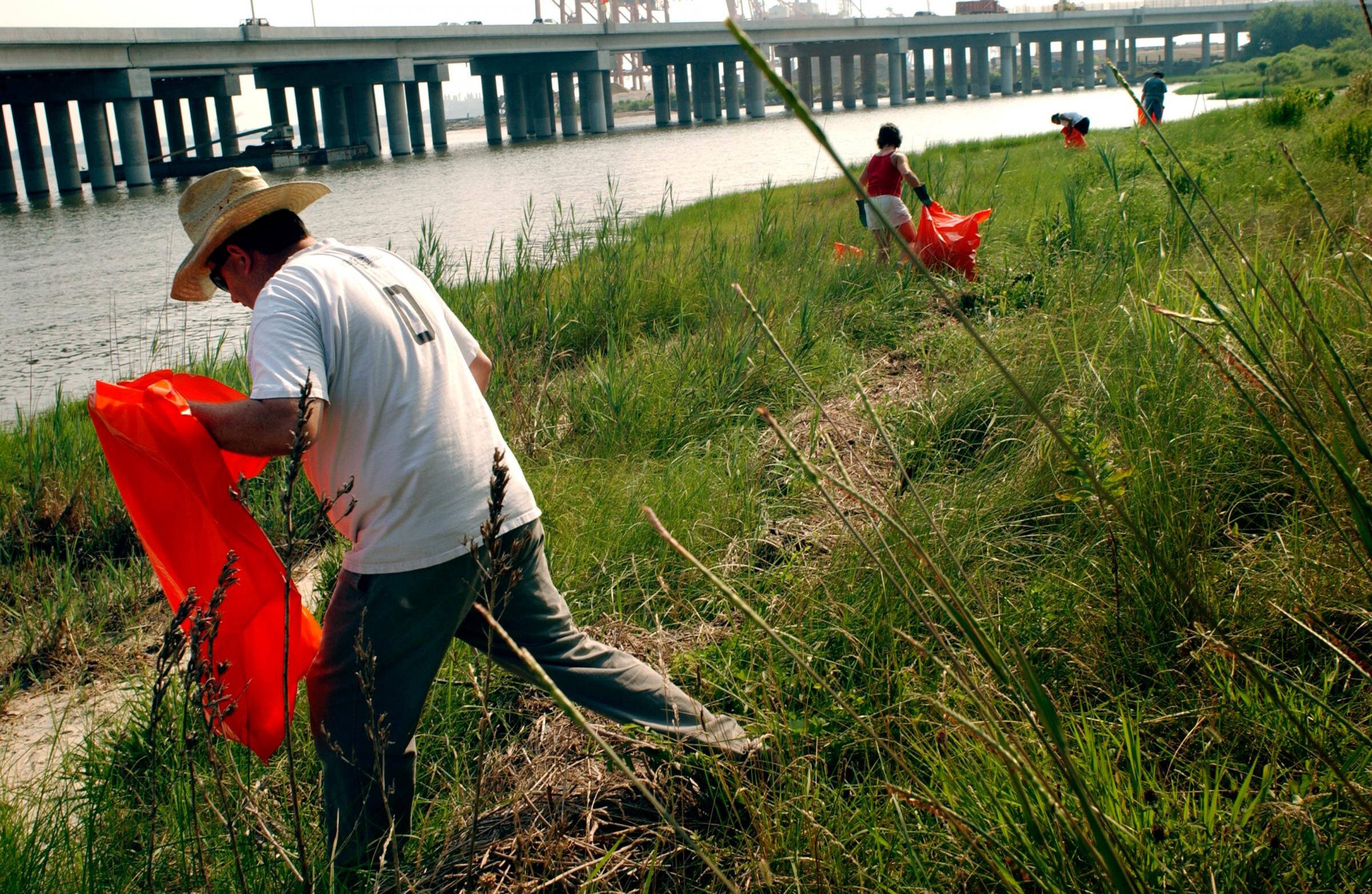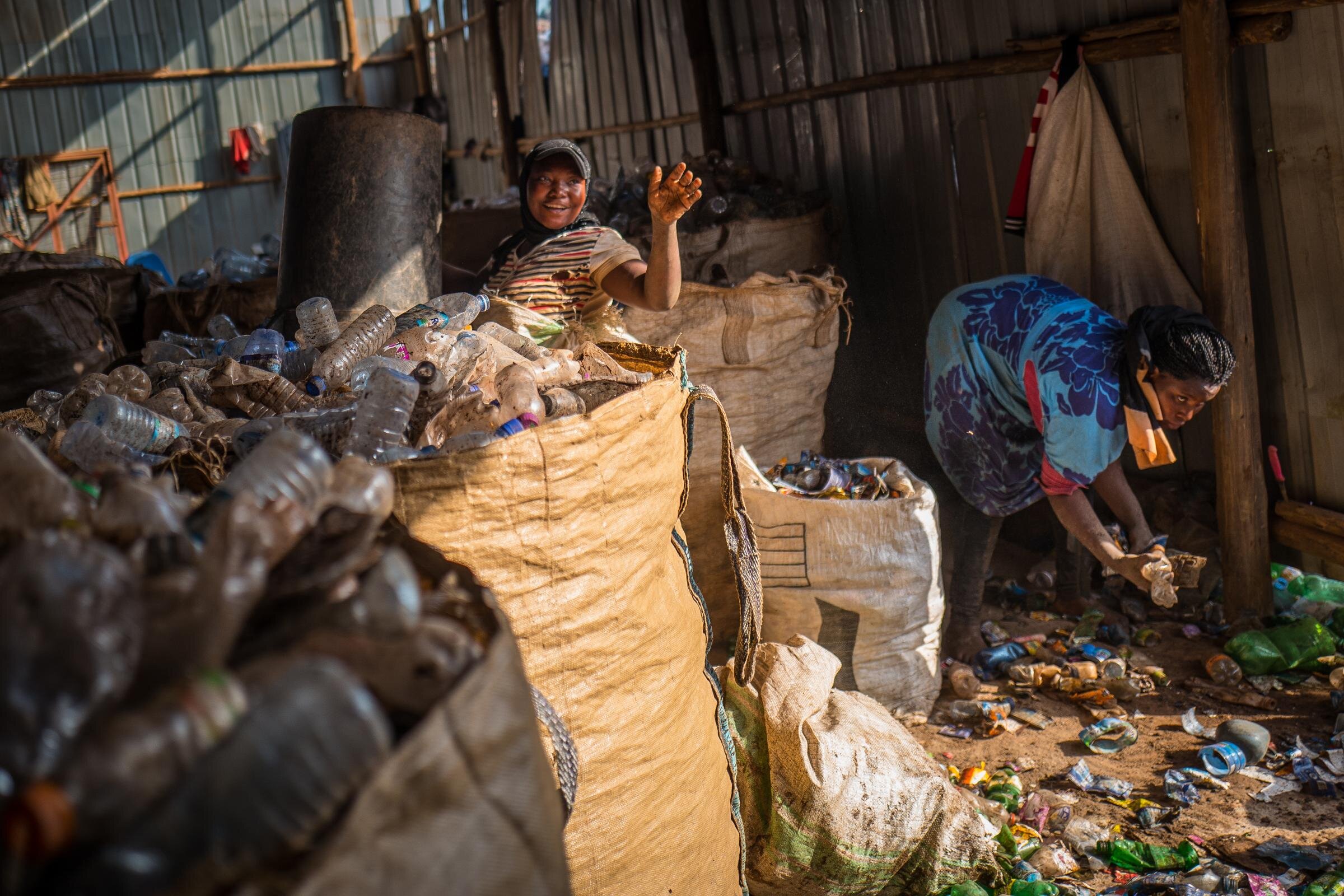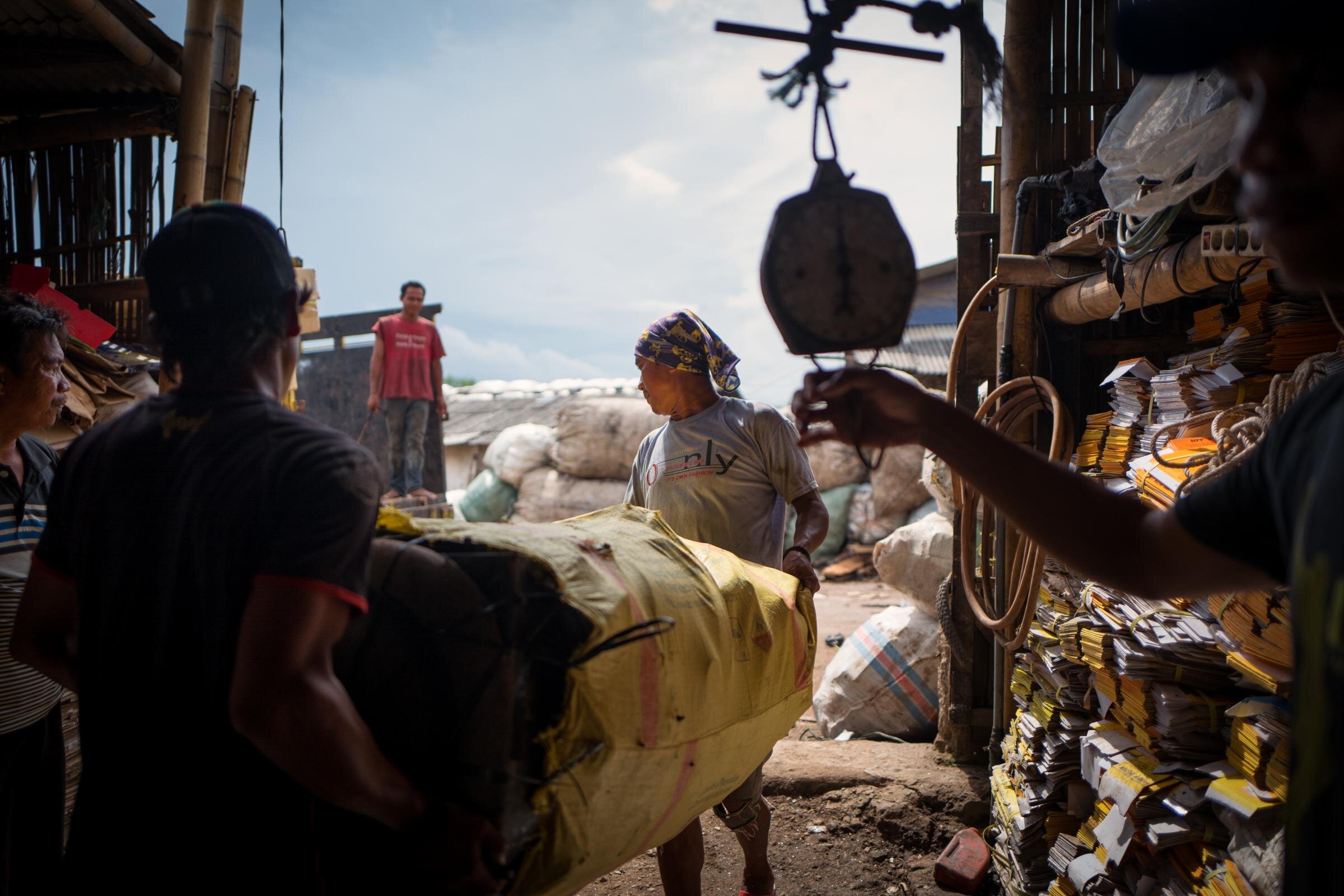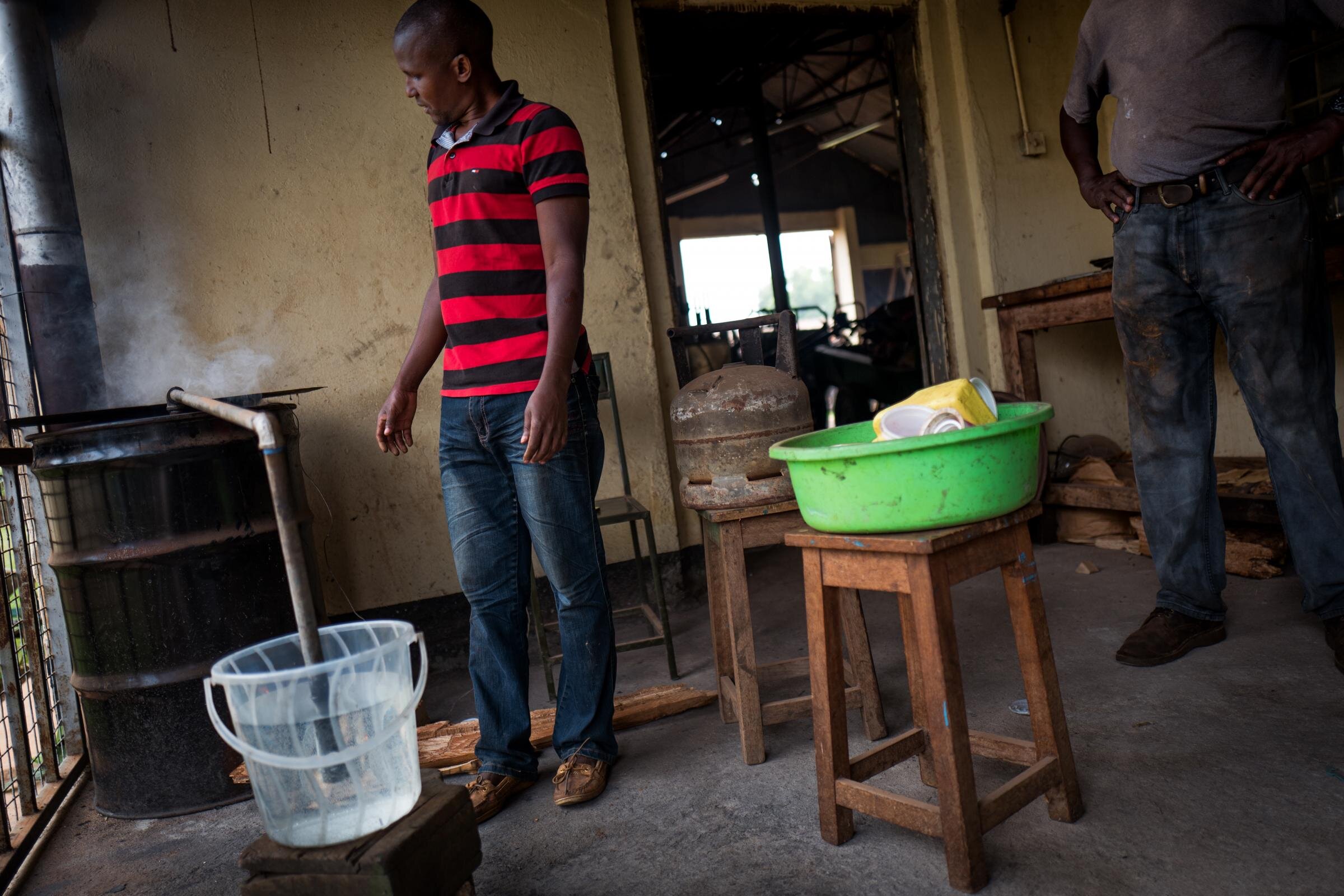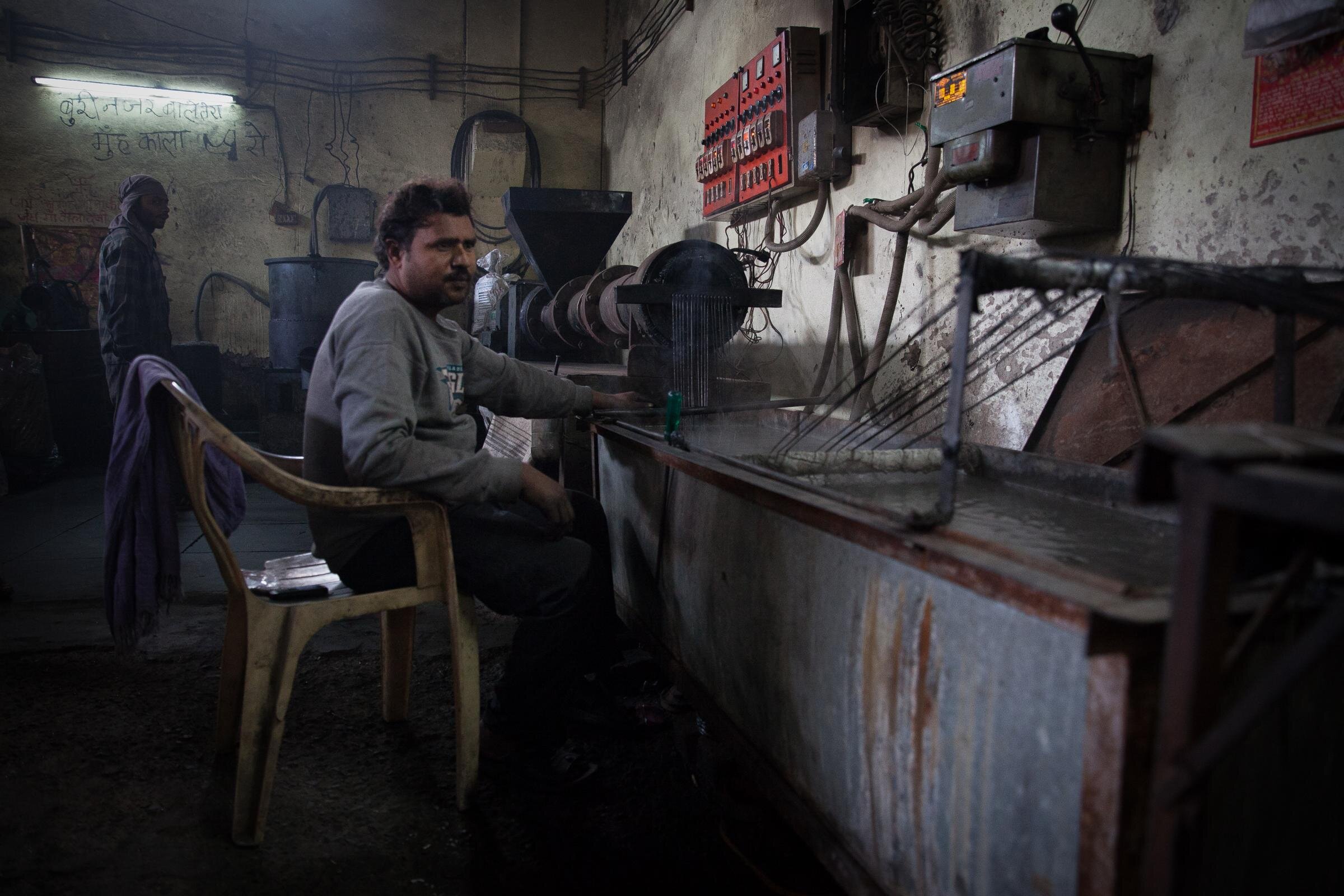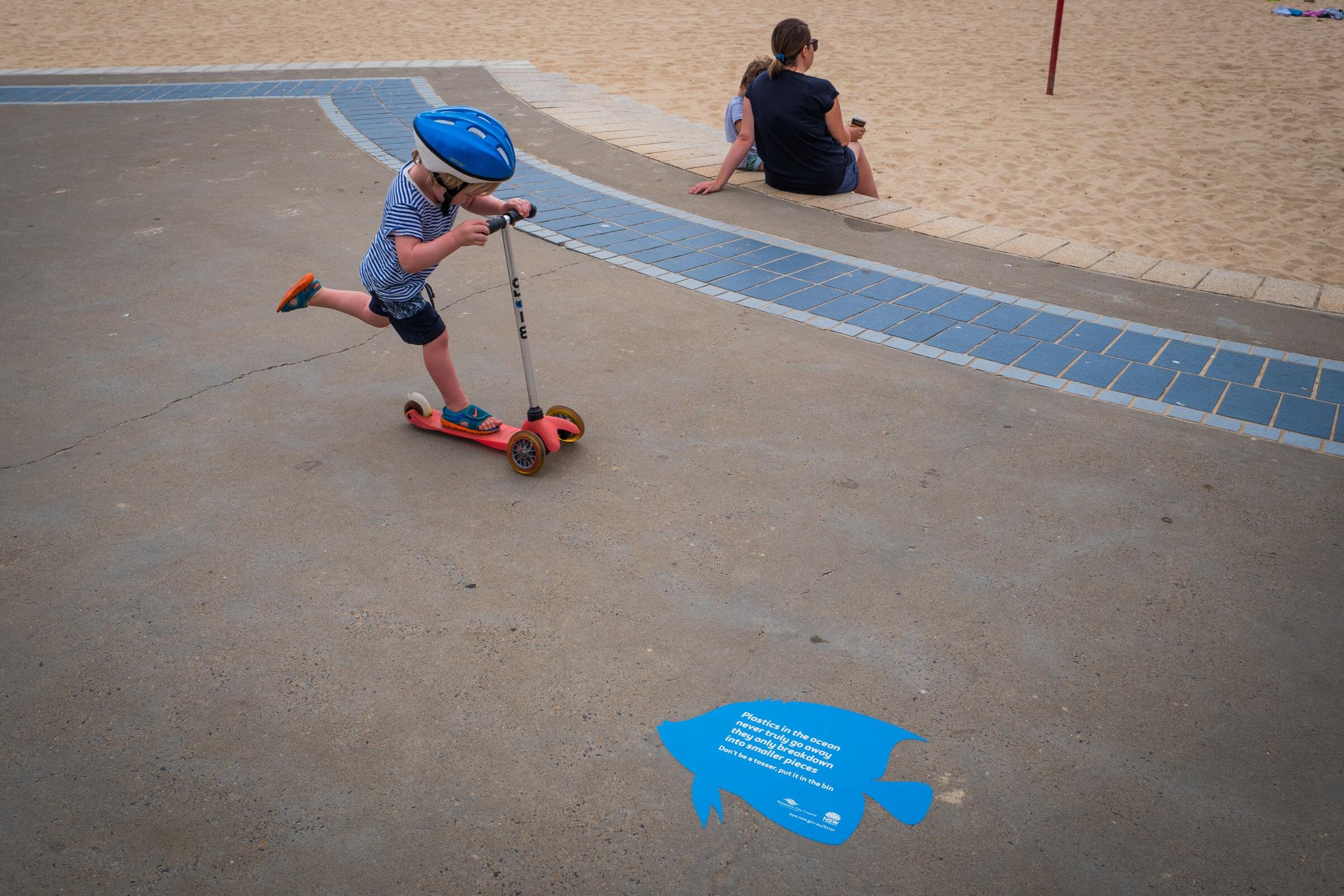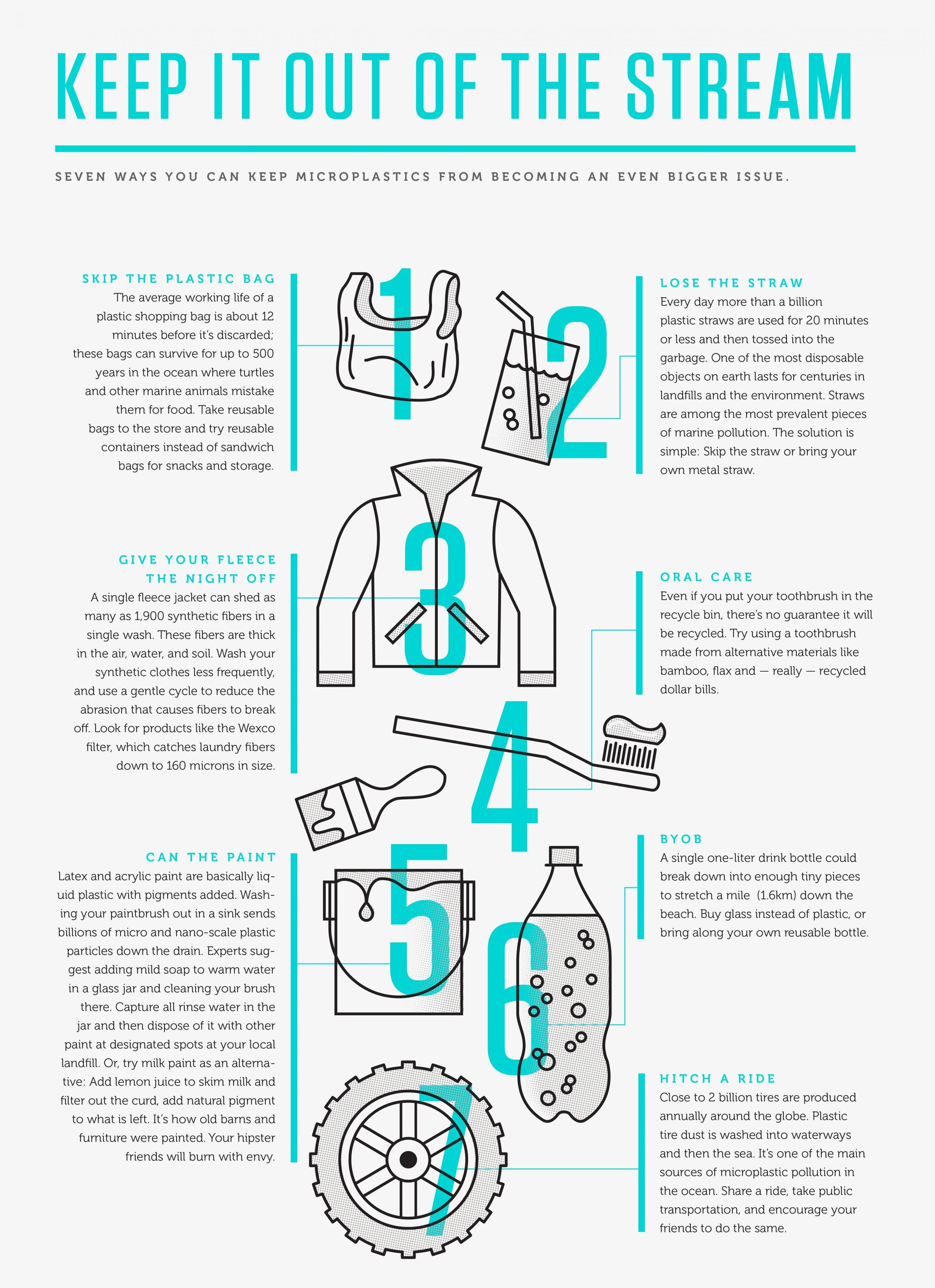
Invisibles
The Plastic Inside Us
An Investigative Report By: Chris Tyree, Journalist, Email and Dan Morrison, Journalist, Email
CHAPTER 1
PLASTIC INVASION
THE PLASTIC INSIDE US
It is everywhere: the most enduring, insidious, and intimate product in the world.
From the soles of your shoes to the contact lenses in your eyes, the phone in your pocket to the food in your refrigerator, the evidence is unmistakable: We are living in The Plastic Age.
Plastic frees us, improving daily life in almost uncountable ways.
And plastic imprisons us in waste and microscopic pollution.
Recent studies have shown the shocking extent of plastics in the world’s oceans and lakes. Orb Media followed with a new question: If microscopic plastic is in oceans, lakes, and rivers, is it in drinking water as well?
In the first public scientific study of its kind, we found previously unknown plastic contamination in the tap water of cities around the world*.
Microscopic plastic fibers are flowing out of taps from New York to New Delhi, according to exclusive research by Orb and a researcher at the University of Minnesota School of Public Health. From the halls of the U.S. Capitol to the shores of Lake Victoria in Uganda, women, children, men, and babies are consuming plastic with every glass of water.
More than 80 percent of the samples we collected on five continents tested positive for the presence of plastic fibers.
Microplastics — tiny plastic fibers and fragments — aren’t just choking the ocean; they have infested the world’s drinking water.
Why should you care? Microplastics have been shown to absorb toxic chemicals linked to cancer and other illnesses, and then release them when consumed by fish and mammals.
Scientists say these microscopic fibers might originate in the everyday abrasion of clothes, upholstery, and carpets. They could reach your household tap by contaminating local water sources, or treatment and distribution systems. But no one knows, and no specific procedures yet exist for filtering or containing them.
If plastic fibers are in your water, experts say they’re surely in your food as well — baby formula, pasta, soups, and sauces, whether from the kitchen or the grocery. Plastic fibers may leaven your pizza crust, and a forthcoming study says it’s likely in the craft beer you’ll drink to chase the pepperoni down.
It gets worse. Plastic is all but indestructible, meaning plastic waste doesn’t biodegrade; rather, it only breaks down into smaller pieces of itself, even down to particles in nanometer scale — one-one thousandth of one-one thousandth of a millimeter.
Studies show particles of that size can migrate through the intestinal wall and travel to the lymph nodes and other bodily organs.
What does plastic in tap water mean for human health, how did it get there, and what can people do about it? We went looking for answers in a ten-month investigation across six continents.
ADDICTED. PLASTIC IS SO USEFUL TO MODERN LIFE THAT WE TEND TO SEE IT AS A NEUTRAL MATERIAL – TASTELESS, ODORLESS, AND RIDICULOUSLY CONVENIENT. THAT CONVENIENCE HAS LED TO ROCKETING PRODUCTION, AND RUNAWAY WASTE, WHICH HAS SENT PLASTIC FIBERS POURING INTO THE ENVIRONMENT AND INTO OUR BODIES.
THE PLASTIC AGE
WE’RE ASKING YOU
CHAPTER 2
THE GREAT CONTAMINATION
PLASTIC FIBERS HAVE INFILTRATED THE DRINKING WATER OF CITIES AND TOWNS ALL OVER THE WORLD, ACCORDING TO ORB’S EXCLUSIVE RESEARCH. THEY WERE EVEN FOUND IN TOP U.S. BOTTLED WATER BRANDS. SYNTHETIC FIBERS ARE ALMOST CERTAINLY IN YOUR FOOD, EXPERTS SAY, INCLUDING BABY FORMULA, PASTA, SOUPS, AND RICE.
“This should knock us into our senses. We knew that this plastic is coming back to us through our food chain. Now we see it is coming back to us through our drinking water. Do we have a way out?”
— Muhammad Yunus, Nobel Peace Prize laureate and founder of Grameen Bank
CONTAMINATED
DID YOU EVER SUSPECT?
CHAPTER 3
HOW DANGEROUS?
There are certain commons that connect us all to each other, air, water, soil, and what we have universally found time and time again is if you contaminate any of those commons, it gets in everything.
— Sherri A. Mason, Ph.D.
Chair, Department of Geology and Environmental Sciences
The State University of New York at Fredonia
THIS PLANKTONIC ARROW WORM, SAGITTA SETOSA, HAS EATEN A BLUE PLASTIC FIBER, BLOCKING THE PASSAGE OF FOOD ALONG ITS GUT. THE FIBER IS APPROXIMATELY 3MM LONG. PLANKTON SUPPORT THE ENTIRE MARINE FOOD CHAIN. RICHARD KIRBY, AN INDEPENDENT PLANKTON SCIENTIST IN THE U.K., HAS OBSERVED THOUSANDS OF PLANKTON CHOKING ON MICROSCOPIC PLASTIC IN HIS SEAWATER SAMPLES. SYNTHETIC CLOTHES ARE THE PRIMARY SOURCE OF PLASTIC FIBERS IN THE SEA. (PHOTO: ©RICHARD KIRBY)
YOUR CHALLENGE: HOW MUCH PLASTIC?
Many of us try to be conscientious about how much single-use plastic we use. So here’s a challenge: Take a paper bag and fill it with all the single-use plastic you go through over the course of a day. Then, scatter it out on the floor and post a picture to Instagram or Twitter with the hashtag #OrbPlastics. You can see how your single-use plastic consumption stacks up with others on our community page.
Whenever you fractionalize a problem, as with the plastic industry not being held responsible for their particular types of waste, there's capacity for that industry then to blame another. So it's waste management; it's not the producer's fault. It's the sewage treatment people’s fault. It's not the actual clothing manufacturer's fault. It's the people who've got the washing machine’s fault. It's somebody else's fault. Generally speaking, it's all of our fault.
— Mark Browne, Ph.D.
Senior Research Associate
School of Biological, Earth and Environmental Sciences
University of New South Wales
THERE ARE LITERALLY MILLIONS OF USES OF PLASTIC AND HUNDREDS, IF NOT THOUSANDS, OF DIFFERENT TYPES OF PLASTIC. THE LATTER ARE IDENTIFIED BY SEVEN RESIN IDENTIFICATION CODES. (THE RESIN CODE DOES NOT MEAN A PARTICULAR PLASTIC IS RECYCLABLE; IT ONLY IDENTIFIES THE MAIN PROPERTIES OF THE PLASTIC.)
PLASTIC INVASION
Chemicals from plastics are a constant part of our daily diet. We generally assume the water bottle holding that pure spring water, the microwave-safe plastic bowl we prepare our meals in, or the styrofoam cup holding a hot drink is there protecting our food and drinks. Rather than acting as a completely inert barrier, these plastics are breaking down and leaching chemicals, including endocrine-disrupting plasticizers like BPA or phthalates, flame retardants, and even toxic heavy metals that are all absorbed into our diets and bodies.
— Scott Belcher, Ph.D.
Research Professor,
North Carolina State University
Spokesman, The Endocrine Society
CHAPTER 4
WHAT NOW?
The only way to keep plastic out of the air, water, and soil is to radically rethink its design, uses, sale, and disposal. There’s a lot of catching up to do. Here are some ways people around the world are working to change this grim global reality.
Waste-to-Energy turns plastic and organic waste into gas and liquid fuel using a variety of technologies. The global waste-to-energy market is forecast to grow into a USD$33 billion industry by 2023.
In the “Circular Economy” model, manufacturers and designers ensure that packaging and materials can be easily recycled and repurposed. Today, more than half of all plastic packaging can’t be recycled.
New Materials: Leading brands and new startups are working to design synthetic fabrics that won’t shed fibers into the air and water. Bolt Threads, in California, is using proteins from spider silk to create a strong, stretchy fabric they hope will replace synthetic fleece. A Japanese company, Spiber, also plans to serve the outdoor apparel industry through spider silk. Meanwhile, startup NewLight Technologies has created a plastic called Air Carbon from greenhouse gases produced by cattle and landfills instead of from oil. “We can’t say enough about this material,” said Joe Burkhart of the U.S. furniture maker KI. “It really has potential to impact the world on a major scale.”
Household Solutions. Designers around the world are looking at ways consumers can reduce plastic emissions. One product, the Cora Ball, catches up to 35 percent of the fibers released in a single load of laundry before they’re discharged into treatment facilities, rivers, and lakes.
Each of these solutions depends on individuals, companies, and governments taking responsibility for the plastic waste generated by their purchases, their product designs, and their attitude to environmental protection.
Plastics are inherently recyclable. What's preventing us from recycling I'd argue, is inadequate, inappropriate, or … lack of proper consideration on the design stage for what's going to happen at the end of life.
— Richard Thompson, Ph.D.
Associate Dean of Research
Science and Engineering
Plymouth University
THE FRONT LINE
WHAT NOW?
Almost no one asks to have plastic or plastic-related chemicals in their body. No brand or manufacturer ever seeks permission to put them there. Regulators, industry, and independent researchers make slow and sometimes contradictory calls over how much of a given pollutant might be safe. That delay can be costly: By the time the U.S. phased out use of the fire retardant PDBE in electronics, baby clothes, and furniture, exposure to the chemical had chopped 11 million IQ points off the intellectual abilities of tens of thousands of U.S. children, at a cost of USD$266 billion and immeasurable heartache.
Fibers in tap water, then, are both a discovery and a marker — a visceral sign of how far plastic has penetrated human life and human anatomy. We can't see the long-chain molecules of pollutants like polyfluoroalkyl chemicals, even if they do reside in more than 98 percent of the population. But when fibers are filtered in a laboratory and enlarged by a microscope, the contamination becomes real.
The first studies into the health effects of microscopic plastics on humans are only just now beginning; there’s no telling if or when governments might establish a “safe” threshold for plastic in water and food. Even farther away are studies of human exposure to nano-scale plastic particles, plastic measured in the millionths of a millimeter.
Municipalities are only beginning to reckon with their role in fiber pollution. Slowing the wastewater treatment process would allow facilities to capture more plastic fibers, said Kartik Chandran, an environmental engineer at Columbia University and a 2015 MacArthur Fellow. But this would likely require the construction of additional treatment facilities and would increase capital costs, he said.
In 1986, K. Eric Drexler, a pioneer in the field of nanotechnology, posited the “Grey Goo Problem,” a doomsday scenario in which tiny robots self-replicate so quickly, and consume so many natural resources, that they extinguish most life on Earth. The computer scientist Bill Joy, a co-founder of Sun Microsystems, gave new fire to this hypothetical in a 2000 essay, “Why the Future Doesn’t Need Us,” that called for curbs on some research into genetics, nanotechnology, and robots.
But what if we don’t need supercomputers and self-breeding robots to wreck the planet? The twin plagues of plastic contamination and climate change show that all it might take is cheap oil, great chemistry, rising living standards, and marvelous profits. The story of the Plastic Age doesn’t end well.
“Since the problem of plastic was created exclusively by human beings through our indifference, it can be solved by human beings by paying attention to it,” Muhammad Yunus, the 2006 Nobel Peace Prize laureate, told Orb. “Now what we need is a determination to get it done — before it gets us.”
*Note:
The study on which this story was based has now been published in Plos One, a peer-reviewed scientific journal, which means that a group of outside experts has found its methods and conclusions to be sound. The Plos One article broadens its description of the fibers found in global tap water samples to include plastic and other man-made substances. In her May 16, 2017, lab report to Orb Media, principal investigator Mary Kosuth had identified the fibers as “plastic,” a synthetic polymer. However, in Plos One, Kosuth and co-authors Sherri Mason and Elizabeth Wattenberg use the term “anthropogenic,” or man-made, to describe these fibers. The authors say they opted for this distinction in Plos One because the fibers Kosuth found in global tap water samples were not confirmed as plastic with an infrared spectroscope. Since the Rose Bengal stain used in the study binds only to natural substances, they write, “it is logical to assume that the particles found are at least synthetic and most likely could be classified as microplastics, but as spectroscopic analyses such as Fourier Transform Infrared Spectroscopy (FTIR) are required in order to confirm this assumption, we use the more general term throughout this report.”
WE’RE ASKING YOU
PLASTIC DUST CAN COME FROM SURFACES INCLUDING CARPETS, CABLES, PAINT, AND VINYL FLOORING, MANY OF THEM MADE WITH PLASTICIZERS THAT CONTAIN ENDOCRINE DISRUPTING CHEMICALS. THESE DUST PARTICLES MAY BE INHALED OR FIND THEIR WAY INTO YOUR BODY THROUGH FOOD AND DRINK LEFT IN OPEN CONTAINERS.





